
Peter's music has been heard on hundreds of radio stations and has been on SiriusXM rotation for over a decade. As a multi-award winning artist, Peter's music has also topped Billboard's Classical and Crossover charts.

For Captain Beefheart, a maverick-artist-musician, who was not just a complicated man but highly demanding and by most accounts very difficult to deal with. It was appropriate that Beefheart's Magic Band was to prominently feature a bassist as accomplished, bold and adventurous as Mark Boston, a.k.a Rockette Morton.

Born on July 14, 1949, Mark began life in the small town of Salem, Illinois before his family moved out to Lancaster, California when he was 13. With a bassist and steel player for a father, Mark gained a great appreciation for country and bluegrass along with the R&B and rock’n’roll that was on the rise. Within a year of the Boston clan moving out to Lancaster, Mark befriended a young guitarist by the name of Bill Harkleroad.
At a time when the bass guitar was seen as the dummy’s instrument, Mark left quite an impression on Bill with his talent and equipment, leading to the two joining forces to form BC And The Cavemen. With Mark’s mother sewing some outfits for them, the band developed a decent reputation, and the two would also play in a band with Jeff Cotton and John French known as Blues In A Bottle. And then a local hero came calling. Or perhaps screaming and howling!
In that same Lancaster scene, Captain Beefheart And His Magic Band were making a big splash as a top flight blues rock outfit, with 'Safe As Milk' having made a strong impression and 'Strictly Personal' being a strong record as well. But even with a sound that was speaking to people, one that perhaps would have been a more pragmatic one as far as a career goes, Don Van Vliet just wasn’t meant for conventional norms.
The Captain had all these ideas, ideas far too out for many, including early members. He needed new musicians, younger and more impressionable ones that wouldn’t object to his ideas. Already having John and Jeff in the band, now 'Drumbo' and Antennae Jimmy Semens, he then recruited Bill, dubbed Zoot Horn Rollo. And on bass, he found Mark Boston, who took the name Rockette Morton due to his love of outer space. And the classic Magic Band was born.
Trout Mask Replica (TMR) wasn’t an easy album to make. Yet even with all the bizarre ideas and the difficulty in preparing those ideas into music, Mark was a total champ through it all. The Beefheart sound is one of great dichotomy, and Mark can capture all of it. He’s so tight and precise, and yet there’s this raw grit and dirt. He’s highly intelligent and sophisticated in his playing, and yet there remains this childlike sense of wonder and curiosity.
He takes after all the great traditional American music, yet out into a whole other realm of time and space. The bass traditionally serves the role of grounding the harmony while locking in with the drums to provide a foundation, yet Mark’s playing often serves as another melody line in the music. In a lot of ways, he’s like a third guitarist that just happens to be playing bass.

The TMR on its own is a legacy few can compete with, and yet Mark contributed to more classic records like "Lick My Decals Off, Baby", "The Spotlight Kid", and "Clear Spot". There on Decals, you get the equivalent of Godfather II. With Mother Art Tripp on marimba and drums rather Jeff on guitar, you get an album that captures a great deal of TMR's brilliance while being brilliant in its own unique way.
Then you get to 'The Spotlight Kid', with bass godliness on cuts like “When It Blows Its Stack”, resulting in a bass solo that often opened shows, yet Mark proves himself just as talented on traditional in-the-pocket styles as demonstrated on cuts like “I’m Gonna Booglarize You Baby”. And that thing about bassists being failed guitarists? In the 'Clear Spot', with Mark taking guitar and the rhythm section now being a mini Mothers reunion of Art and Roy Estrada, yet nobody missed a beat. Throughout the record, Bill and Mark’s kinship really shines, their weaving right there with what Bill and Jeff had done, or what was done with Alex St Clair early on.
Of course, dealing with Don was quite a task of its own, so it’s inevitable that Mark and the others would all end up departing by 1974. He and Bill soon formed a group of their own called Mallard. For two albums, the first with Art and having some writing help from John French 'Drumbo', Mallard showed itself a pretty decent blues rock outfit. And giving that it was Mark who finally had a chance to create something that was truly his own rather than helping some achieve their vision, it’s understandably the work that he takes pride in. And over time, he’d end up making a solo record and create some cool artwork of his own, as well as performing with 'Drumbo' in the reformed Magic Band, allowing the music to live and breathe on stage again.
If you’re a Beefheart fan, how can you not love Rockette Morton? Not only a uniquely talented bass player but such a great stage presence full of joy, along with a lovably quirky personality and such a sweet guy. Easily one of my favorites from Magic Band members, you can’t help but smile when thinking about Mark. He’s been through some rough weather, including his health scares, and yet he’s still the same Mark we’ve known and loved all the years.
Happy birthday Mark! Thank you for all you have given us and look forward to more.
___________________
Patrick Moore is a freehand drawing artist and freelance music writer.
Top News

Honoured with the Order of British Columbia, Peter Dhillon has partnered with the University of British Columbia to launch the $7.5 million Peter P. Dhillon Centre for Business Ethics
By Gurmukh Singh Peter Dhillon is the undisputed cranberry king of Canada. But he could be an equally famous lawyer today. However, he chose not to be. Instead, this Sikh from Richmond in British Columbia chose what is in his family DNA – farming. ‘‘If I have to choose all over again, I will once again choose cranberry farming. I made the right decision,’’ says Peter Dhillon whose real name is Peter PovitarDhillon. With 20 million pounds of output last year, his Richberry Group of Companies is the Canadian leader in cranberry production. His aim is to become the world leader in cranberry production soon, he says. But in the pursuit of business success, he has never lost sight of two virtues: good ethics and compassion. In fact, the two words - ethics and compassion - roll off his tongue repeatedly as he lays out future vision for his business. And in keeping with his values, Dhillon has partnered with his alma mater - the University of British Columbia in Vancouver - to set up the $7.5-million Peter P. Dhillon Centre for Business Ethics. Business is not just about financial success, it is about ethics, asserts the CEO of the Richberry Group of Companies. Honoured with the Order of British Columbia for his services, Peter Dhillon created another history in 2014 when he became the first Canadian to be elected chairman of cranberry farmers’ marketing cooperative Ocean Spray with annual sales of about $2.5 billion. As Ocean Spray chairman, he says his mission is to take cranberry products to his native India. Cranberries, he says, are one of the healthiest fruits and sure cure for urinary tract infections. In this interview, Peter Dhillon opens up about himself and talks about his family’s journey from India to Canada: Q: Tell us about your family’s journey to Canada. My family comes from Pandori village in Hoshiarpur district of Punjab in India. I guess my father RashpalDhillon was 12 or 13 when he came to Canada in 1950 to live with his aunt. Then his brother also came. Dad went to school, but they were very poor. My dad and his brother used to pick pop bottles to make some money. They searched for jobs, they drove lumber trucks. Life was very tough. Q: Then your dad created history by becoming the first Sikh to join the Royal Canadian Mounted Police, right? Yes. My father was 19 when he joined the RCMP. He was stationed in Alberta. He served as a prison guard and then became a deputy sheriff. [caption id="attachment_78548" align="alignnone" width="800"]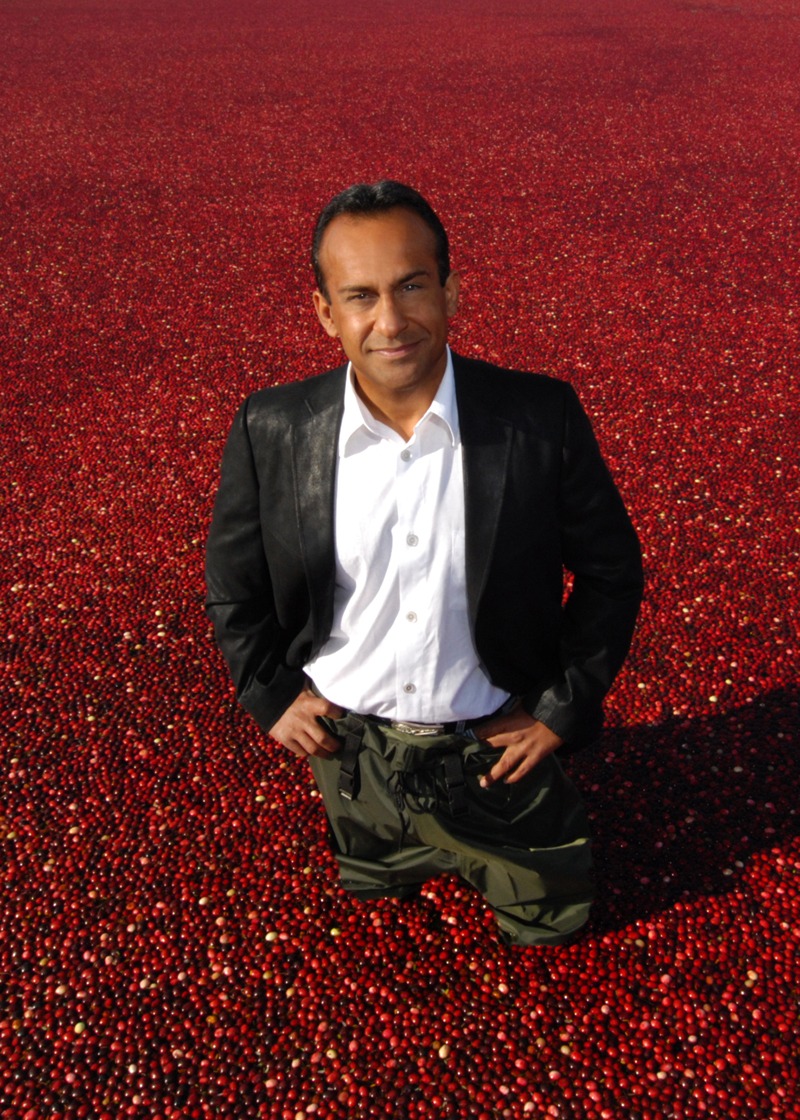 Peter Dhillon with his cranberry crop in Richmond, British Columbia.[/caption]
Q: So how did your dad end up in cranberry farming?
At heart, my dad was always an entrepreneur. He had worked on some farms in California and agriculture was the business he was pretty good at. In 1978, he and Didar Singh Bains (famous peach farmer of Yuba City) jointly bought a 250-acre cranberry farm. In 1981-82, my dad took premature retirement when he was in his late 40s and got into cranberry cultivation full time.
In 1985, my dad parted company with Didar Singh Bains and started his own cranberry operations with under 100 acres, then he added more and reached 250 acres. As a boy, I used to assist him. We used to work from early morning till late. He taught me the value of hard work. Then I went to the UBC (University of British Columbia) for my graduation and after doing my law degree from the UK, I joined my parents in their business in 1993.
Q: Looking back, do you think you could have done better in the legal profession?
Initially, I used to ask myself: Have I made the right decision to give up law?
Today, looking back, I can certainly say that it was the right decision. I wouldn’t have been able to have the experiences I have had if I hadn’t joined the family business.
I have met so many incredible people and sat on so many boards because of the success of Richberry.
Q: How did you choose the name Richberry for your group of companies?
We had a farm in Richmond and we were growing berries. So my dad, mom and I combined the names of Richmond and berries and came up with Richberry as the name of our company.
[caption id="attachment_994" align="alignnone" width="800"]
Peter Dhillon with his cranberry crop in Richmond, British Columbia.[/caption]
Q: So how did your dad end up in cranberry farming?
At heart, my dad was always an entrepreneur. He had worked on some farms in California and agriculture was the business he was pretty good at. In 1978, he and Didar Singh Bains (famous peach farmer of Yuba City) jointly bought a 250-acre cranberry farm. In 1981-82, my dad took premature retirement when he was in his late 40s and got into cranberry cultivation full time.
In 1985, my dad parted company with Didar Singh Bains and started his own cranberry operations with under 100 acres, then he added more and reached 250 acres. As a boy, I used to assist him. We used to work from early morning till late. He taught me the value of hard work. Then I went to the UBC (University of British Columbia) for my graduation and after doing my law degree from the UK, I joined my parents in their business in 1993.
Q: Looking back, do you think you could have done better in the legal profession?
Initially, I used to ask myself: Have I made the right decision to give up law?
Today, looking back, I can certainly say that it was the right decision. I wouldn’t have been able to have the experiences I have had if I hadn’t joined the family business.
I have met so many incredible people and sat on so many boards because of the success of Richberry.
Q: How did you choose the name Richberry for your group of companies?
We had a farm in Richmond and we were growing berries. So my dad, mom and I combined the names of Richmond and berries and came up with Richberry as the name of our company.
[caption id="attachment_994" align="alignnone" width="800"]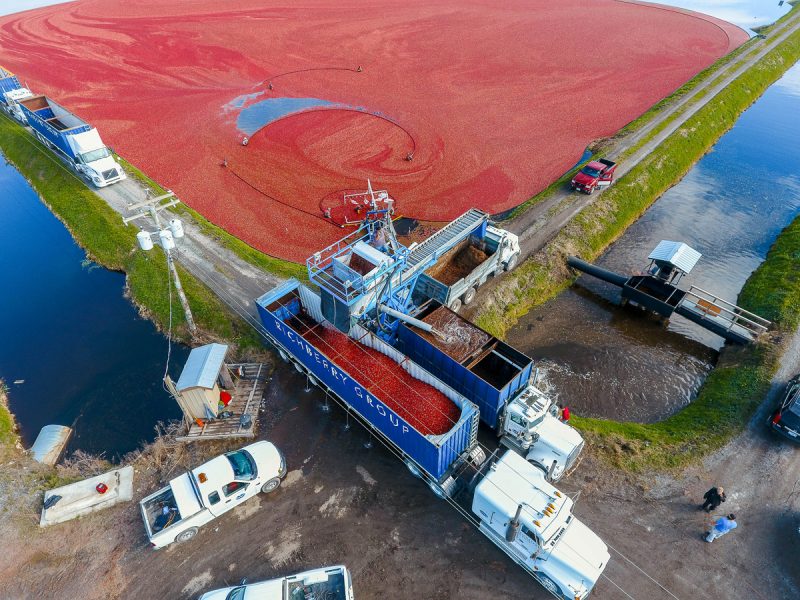 Peter Dhillon's cranberry operations in Richmond, British Columbia.[/caption]
Q: Tell us about cranberry. How many times a year is it harvested? Is its farming a labour-intensive operation?
It is a berry fruit. Cranberries are one of the healthiest foods as they are anti-oxidant and very effective against stomach ulcers and urinary tract infections. Cranberries are harvested only once a year. Our peak season is from September to October. Cultivating cranberries used to be a labour-intensive operation, but now we use a lot of machinery. I have a team of professionals to run day-to-day operations.
Q: How and where do you market cranberry produce?
We market it through Ocean Spray which takes harvest directly from farmers in the US, Canada and elsewhere and sells Ocean Spray products worldwide. Ocean Spray is in about 90 countries with over 1,000 different products.
Q: Tell us more about Ocean Spray which elected you as its chairman in 2014.
It is a marketing cooperative of about 700 cranberry growers from the US and Canada. Ocean Spray is the best thing to happen to our industry. I joined its board of directors in 2003. In 2014, I became the first non-American chairman of Ocean Spray. I am proud to be its chairman. The Richberry Group of Companies are also the largest Canadian shareholders and suppliers of Ocean Spray.
Q: What about India?
Ocean Spray is keen on exploring the opportunities the Indian marketplace may have to offer. We have just completed a 72-hour trip where myself and the Ocean Spray team had 26 meetings. We met with several groups, from business and political leaders to the CEO of Invest India. We were given unique insights on how to approach business opportunities in India. There is a huge potential for cranberry juice and dried products in India as Indians are becoming increasingly health conscious.
[caption id="attachment_280" align="alignnone" width="800"]
Peter Dhillon's cranberry operations in Richmond, British Columbia.[/caption]
Q: Tell us about cranberry. How many times a year is it harvested? Is its farming a labour-intensive operation?
It is a berry fruit. Cranberries are one of the healthiest foods as they are anti-oxidant and very effective against stomach ulcers and urinary tract infections. Cranberries are harvested only once a year. Our peak season is from September to October. Cultivating cranberries used to be a labour-intensive operation, but now we use a lot of machinery. I have a team of professionals to run day-to-day operations.
Q: How and where do you market cranberry produce?
We market it through Ocean Spray which takes harvest directly from farmers in the US, Canada and elsewhere and sells Ocean Spray products worldwide. Ocean Spray is in about 90 countries with over 1,000 different products.
Q: Tell us more about Ocean Spray which elected you as its chairman in 2014.
It is a marketing cooperative of about 700 cranberry growers from the US and Canada. Ocean Spray is the best thing to happen to our industry. I joined its board of directors in 2003. In 2014, I became the first non-American chairman of Ocean Spray. I am proud to be its chairman. The Richberry Group of Companies are also the largest Canadian shareholders and suppliers of Ocean Spray.
Q: What about India?
Ocean Spray is keen on exploring the opportunities the Indian marketplace may have to offer. We have just completed a 72-hour trip where myself and the Ocean Spray team had 26 meetings. We met with several groups, from business and political leaders to the CEO of Invest India. We were given unique insights on how to approach business opportunities in India. There is a huge potential for cranberry juice and dried products in India as Indians are becoming increasingly health conscious.
[caption id="attachment_280" align="alignnone" width="800"]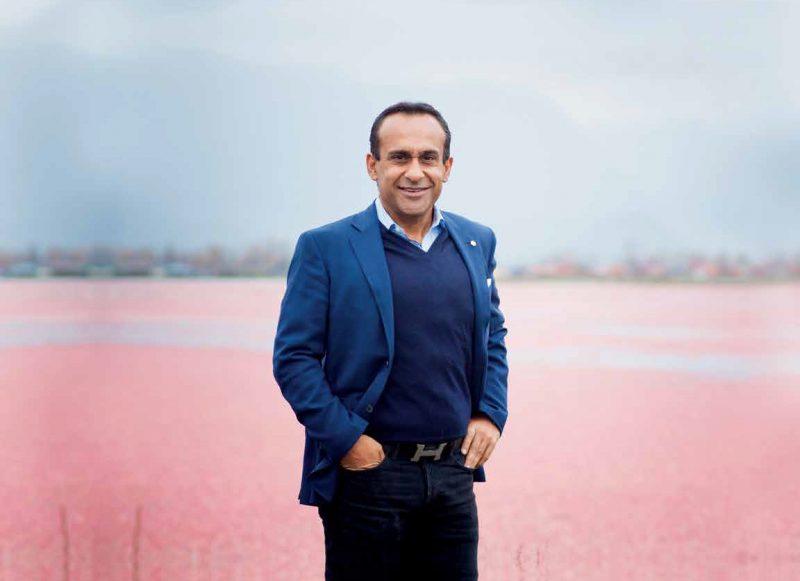 As Ocean Spray CEO, Peter Dhillon wants take its products to India.[/caption]
Q: What are your business plans for the next years?
We want to become the world leader in cranberry production. Currently, the biggest cranberry farmers are in Massachusetts and they have been in this business for 158 years. They have about 2,500 acres and we have 2,000 acres. So we need to catch up.
As Ocean Spray CEO, Peter Dhillon wants take its products to India.[/caption]
Q: What are your business plans for the next years?
We want to become the world leader in cranberry production. Currently, the biggest cranberry farmers are in Massachusetts and they have been in this business for 158 years. They have about 2,500 acres and we have 2,000 acres. So we need to catch up.
We produced over 20 million pounds of cranberries last year and we hope to the touch the 30 million-mark soon.
Q: Despite your huge success, do you have any regrets in life? I try not to live my life where I have to regret my decisions. But what I regret is not having spent more time with my father who passed away in 2003 from the lung disease called idiopathic pulmonary fibrosis. He was my mentor. Q: That is why you donated $2 million to the University of British Columbia to establish the Rashpal Dhillon Fund in Idiomatic Pulmonary Research and the Rashpal Dhillon Track and Field Oval in his memory? Yeah, the donation is to honour my father’s memory and further research in idiopathic pulmonary fibrosis which claimed his life. There is no cure for this disease which kills more people than breast cancer each year. I had a great relationship with my father. He was a wonderful dad and I have great memories of him. He taught me the value of hard work and good ethics. Q: Talking about ethics, you have established the Peter P. Dhillon Centre for Business Ethics at the Sauder School of Business at the UBC and committed half of the $7.5 million to fund it. What was the trigger for it? As I said, my dad taught me all the good values and he remains my inspiration. The idea to start the centre for business ethics at the UBC came in 2012 when I was in Florida visiting my friend named Herb Baum - he is a former top business executive. He and I had a long conversation about business ethics and responsibilities in the wake of 2008 global crisis triggered by corporate greed and unethical b usiness practices. The Peter P. Dhillon Centre is one of its kind. It is functioning now. It has an office, it has an advisory board, it has an executive director. We will hire more staff soon and build syllabuses. You have to do a lot of heavy lifting in the beginning. [caption id="attachment_996" align="alignnone" width="800"]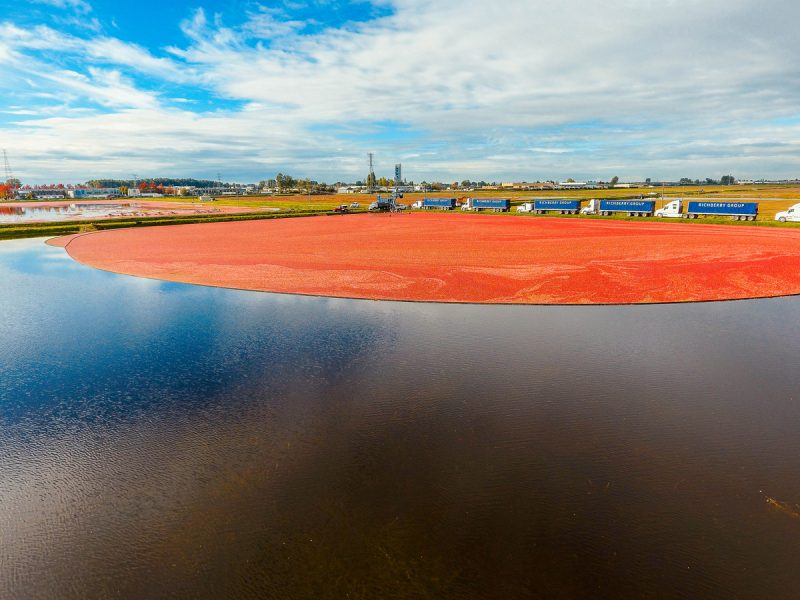 Peter Dhillon's Richberry Farms.[/caption]
Q: How will the Peter P. Dhillon Centre for Business Ethics drill ethics into students?
The centre will teach the value of ethical decisions by business leaders. Students and young business leaders who come to the centre will be exposed to the concepts of compassion and kindness.
The centre will teach that business is not all about success, but how it is conducted. I hope this centre would have made a meaningful contribution to society if we can teach future business leaders that compassion and kindness are as important as success.
Q: Who are your icons?
There are two persons who are my icons. Of course, my father - who was an extremely hard working immigrant - is my icon and role model. The other person for whom I have the highest respect was Jack Bell - my father’s business partner. He was a person from whom I learnt the importance of giving. He was born in Montreal and moved to Vancouver to start many businesses.Jack was the first person to write a seven-figure cheque to a charity - the University of British Columbia. He moved philanthropy to a whole new level. He was my role model.
Q: And your cardinal sin in life?
I guess my cardinal sin is that at times I am not able to say ‘no’ to people. I think that has not served me well in business. I am the person who doesn’t like conflict. I would walk away and do other positive things. I look for the best in people.
Q: What kind of people do you usually associate with?
I usually associate with my closest friends. And my closest friends are business people. As there is a saying, ‘Show me your friends, I can tell anything about you.’ So the people I associate with are the ones who have good principles and who share my philosophical outlook.
One person that I often see is Rick Doman, the son of the late Herb Doman. I also like those who love a little fun. That is important especially when life is already so serious. You often have to step back a little and enjoy life.
[caption id="attachment_1006" align="alignnone" width="800"]
Peter Dhillon's Richberry Farms.[/caption]
Q: How will the Peter P. Dhillon Centre for Business Ethics drill ethics into students?
The centre will teach the value of ethical decisions by business leaders. Students and young business leaders who come to the centre will be exposed to the concepts of compassion and kindness.
The centre will teach that business is not all about success, but how it is conducted. I hope this centre would have made a meaningful contribution to society if we can teach future business leaders that compassion and kindness are as important as success.
Q: Who are your icons?
There are two persons who are my icons. Of course, my father - who was an extremely hard working immigrant - is my icon and role model. The other person for whom I have the highest respect was Jack Bell - my father’s business partner. He was a person from whom I learnt the importance of giving. He was born in Montreal and moved to Vancouver to start many businesses.Jack was the first person to write a seven-figure cheque to a charity - the University of British Columbia. He moved philanthropy to a whole new level. He was my role model.
Q: And your cardinal sin in life?
I guess my cardinal sin is that at times I am not able to say ‘no’ to people. I think that has not served me well in business. I am the person who doesn’t like conflict. I would walk away and do other positive things. I look for the best in people.
Q: What kind of people do you usually associate with?
I usually associate with my closest friends. And my closest friends are business people. As there is a saying, ‘Show me your friends, I can tell anything about you.’ So the people I associate with are the ones who have good principles and who share my philosophical outlook.
One person that I often see is Rick Doman, the son of the late Herb Doman. I also like those who love a little fun. That is important especially when life is already so serious. You often have to step back a little and enjoy life.
[caption id="attachment_1006" align="alignnone" width="800"]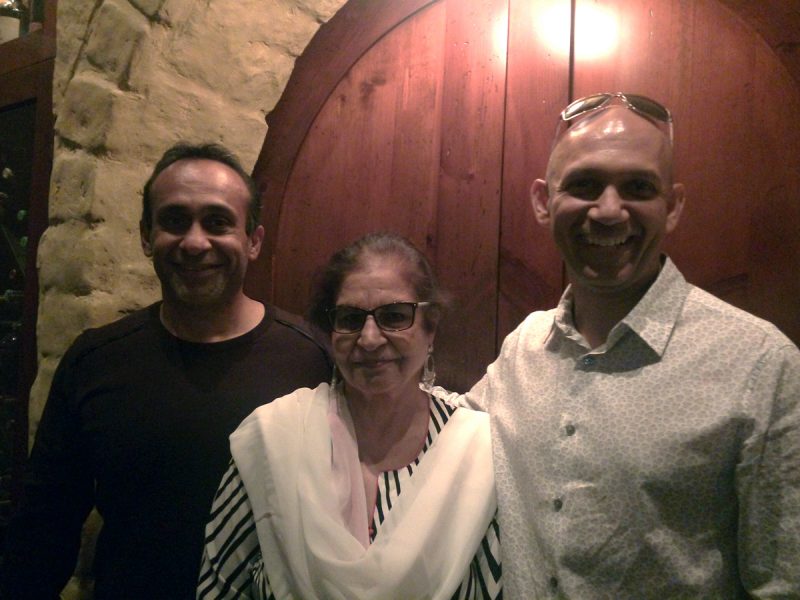 Peter Dhillon and his mother seen with Nadir Patel who is Canada's high commissioner in India.[/caption]
Q: Talking about enjoying one’s life, do you have any hobbies to unwind?
I like biking. That is my hobby. Another hobby of mine is the bike race from Vancouver to Whistler each year in September. It is called GranFondo and I do it every year to raise awareness about the disease - idiopathic pulmonary fibrosis - that killed my father. It is a very personal thing for me.
Q: Do you have any one thing in your life which you will never part with?
I don’t think I have anything in life that I couldn’t walk away from.
Q: Hobbies apart, how do you relax?
I go home and watch news or just sit down with friends. I don’t go on vacations because I travel a lot. Last year, I was travelling for 250 days! Then I have a home in Whistler where I go once in a while to relax. That’s all.
Q: You have spoken glowingly about your father. How about your mom?
My mom is a terrific lady. She doesn’t get enough credit for what she did for our family. She would always encourage my dad to take risks. In fact, it was she who encouraged my dad to get into cranberry farming. I wonder whether we would be in cranberry today if she had not forced my dad into it. She is a great mom.
Q: What’s your favourite place?
Whistler - I like to stay close to my home.
[caption id="attachment_995" align="alignnone" width="800"]
Peter Dhillon and his mother seen with Nadir Patel who is Canada's high commissioner in India.[/caption]
Q: Talking about enjoying one’s life, do you have any hobbies to unwind?
I like biking. That is my hobby. Another hobby of mine is the bike race from Vancouver to Whistler each year in September. It is called GranFondo and I do it every year to raise awareness about the disease - idiopathic pulmonary fibrosis - that killed my father. It is a very personal thing for me.
Q: Do you have any one thing in your life which you will never part with?
I don’t think I have anything in life that I couldn’t walk away from.
Q: Hobbies apart, how do you relax?
I go home and watch news or just sit down with friends. I don’t go on vacations because I travel a lot. Last year, I was travelling for 250 days! Then I have a home in Whistler where I go once in a while to relax. That’s all.
Q: You have spoken glowingly about your father. How about your mom?
My mom is a terrific lady. She doesn’t get enough credit for what she did for our family. She would always encourage my dad to take risks. In fact, it was she who encouraged my dad to get into cranberry farming. I wonder whether we would be in cranberry today if she had not forced my dad into it. She is a great mom.
Q: What’s your favourite place?
Whistler - I like to stay close to my home.
[caption id="attachment_995" align="alignnone" width="800"]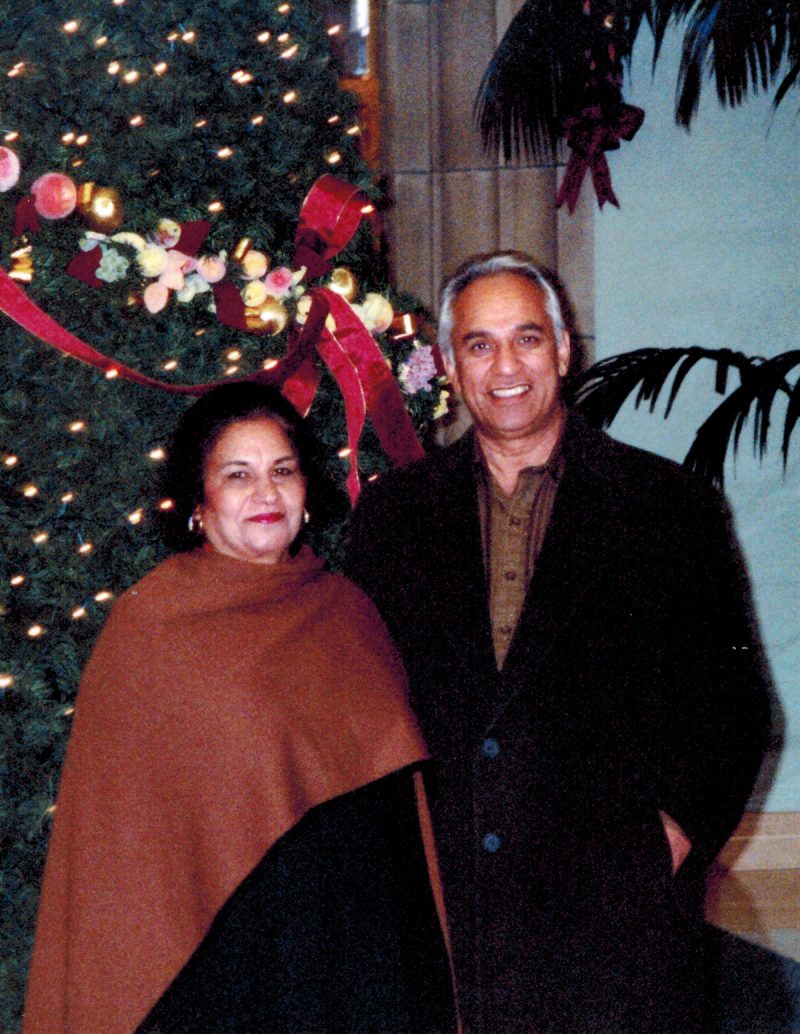 Peter Dhillon's parents Surinder & Rashpal Dhillon. His father started cranberry farming after quitting police job.[/caption]
Q: Do you believe in God?
Yes, I am spiritual. I believe that life is a gift from God. I believe in karma - good things come back to you. There is some energy, some force beyond us.
Q: Your favourite book.
Good to Great by Jim Collins is my favourite book. It is about business leaders and how they take it to the
new level. It is an amazing book.
Q: The biggest honour you have received.
The Order of British Columbia. I was the youngest to receive it. Accepting it was a humbling experience because there were many accomplished older people there when I received it.
They honoured me for my community work, giving back to the community and sitting on various corporate boards.
(Updated: This article which first appeared here on Feb 7, 2018)
Peter Dhillon's parents Surinder & Rashpal Dhillon. His father started cranberry farming after quitting police job.[/caption]
Q: Do you believe in God?
Yes, I am spiritual. I believe that life is a gift from God. I believe in karma - good things come back to you. There is some energy, some force beyond us.
Q: Your favourite book.
Good to Great by Jim Collins is my favourite book. It is about business leaders and how they take it to the
new level. It is an amazing book.
Q: The biggest honour you have received.
The Order of British Columbia. I was the youngest to receive it. Accepting it was a humbling experience because there were many accomplished older people there when I received it.
They honoured me for my community work, giving back to the community and sitting on various corporate boards.
(Updated: This article which first appeared here on Feb 7, 2018) 
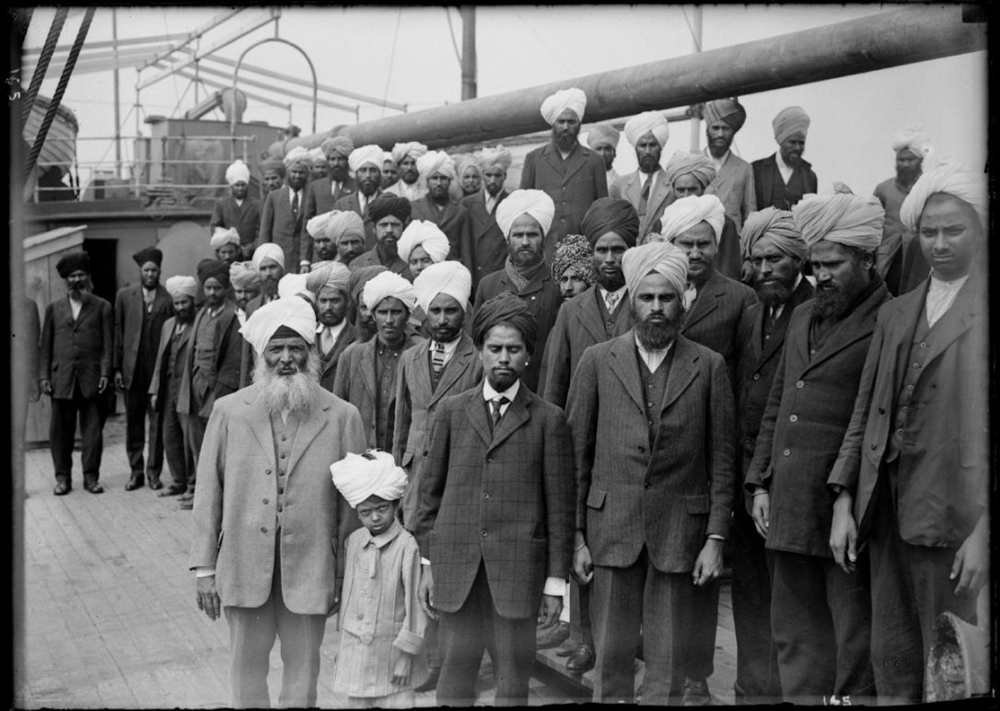 Passengers of Komagata Maru in Vancouver Harbour in 1914. The ship was sent back to India.[/caption]
This precipitated the Komagata Maru tragedy in 1914 when a Japanese ship by this name was leased by Hong Kong businessman Gurdit Singh. He brought in 376 passengers to unsuccessfully challenge the Continuous Journey Act. Unfortunately, only 20 or so passengers on this ship, who had some prior status in Canada, were allowed to land and the remaining 356 were forced to go back to India at gun point after anxiously waiting for two months (May 23 to July23, 1914) in Vancouver harbour. To its credit, the current Liberal government lead by Prime Minister Justin Trudeau apologized on May 18,2016 in Canada’s Parliament to the South Asian community for this tragedy.
Passengers of Komagata Maru in Vancouver Harbour in 1914. The ship was sent back to India.[/caption]
This precipitated the Komagata Maru tragedy in 1914 when a Japanese ship by this name was leased by Hong Kong businessman Gurdit Singh. He brought in 376 passengers to unsuccessfully challenge the Continuous Journey Act. Unfortunately, only 20 or so passengers on this ship, who had some prior status in Canada, were allowed to land and the remaining 356 were forced to go back to India at gun point after anxiously waiting for two months (May 23 to July23, 1914) in Vancouver harbour. To its credit, the current Liberal government lead by Prime Minister Justin Trudeau apologized on May 18,2016 in Canada’s Parliament to the South Asian community for this tragedy.

The Brampton great-grandson recalls the life of Baba Gurdit Singh
By Tejpal Sandhu Komagata hero Baba Gurdit Singh was my great grandfather. Born to Sardar Hukam Singh and Gulab Kaur at Sarhali village in Amritsar district in 1859, he received only a little education at the gurdwara as there was no school in the village. He was a little boy when his father went to Malaysia. At the age 13, Baba Gurdit Singh joined his father in Malaysia. His first job was with a Chinese meat businessman which required him to learnt Malay and Mandarin. While working with the Chinese businessman, he also learnt dairy farming and soon started his own dairy farm. He would import cows and buffalos from India as his dairy business flourished. He also started working as a contractor for building railway lines and mines and soon became very rich. He married and had a son named Balwant Singh (my grandfather). But his wife died when he was 45 years old and he never remarried. Baba Gurdit Singh was considered the richest Sikh of his time and very influential. He had business interests in Hong Kong. He went there often and visited the local gurdwara. At that gurdwara he would see many Indians stuck in Hong Kong because the ships going to Vancouver won’t pick up them up. These Indians sought Baba Gurdit Singh’s help to reach Vancouver. Bhai Balwant Singh, granthi of the Khalsa Diwan Society gurdwara in Vancouver, had also visited Babaji in Malaysia in 1912 to seek his help on the entry into Canada. That’s why Baba Gurdit Singh hired the Komagata Maru ship from a Japanese company for six months to challenge Canada’s discriminatory laws. Before he hired the Komagata Maru, he wanted to hire a ship from India so that he could bring Indians to Canada directly, but it didn’t work out. He paid 11,000 Hong Kong dollars per month to hire the Komagata Maru and brought fellow 376 passengers to Vancouver on May 23, 1914. But they were not allowed to disembark. The ship was forcibly returned after two months. When Baba Gurdit Singh and other passengers reached Budge Budge Ghat in Calcutta, the ship was seized by the police. They were forced to leave the ship empty-handed. Baba Gurdit Singh only managed to take the holy Guru Granth Sahib from the ship. He wanted to go to a gurdwara in Calcutta to place the holy Granth there and also talk to lawyers about their treatment by the government. He also wanted to talk to the owners of the Komagata Maru to finalize a deal to purchase the ship, but they were not allowed. Instead, they were forced to board the train that was in the Budge Budge Railway Station. But they refused to board the train, saying that they are now in their own country and free to go where they want. When they all sat in an open place to say their evening prayers, policemen swooped on them and asked them who Baba Gurdit Singh was. When they all refused to speak, the policemen tried to forcibly take away his six-year-old son who was also one of the passengers. This enraged the passengers and a fight broke out. The policemen fired on the passengers, killing 19 and injuring nearly 40. Baba Gurdit Singh and four of his men escaped from there. Baba Gurdit Singh’s son was sent to our village Sarhali to live with his grandfather (Hukam Singh). Baba Gurdit Singh lived underground for six to seven years and his businesses in Malaysia and Hong Kong got ruined. But on Guru Nanak Dev ji’s birthday, he decided to turn himself in at Nankana Sahib. He was put in jail. When he got very old, he was kept under house arrest at our village Sarhali. After the independence of India, Baba Gurdit Singh went to Calcutta and stayed there till 1952. He returned to Amritsar in 1952 where he passed away on July 24, 1954. He was cremated at Sarhali as per his wishes. We salute my great grandfather’s bravery and courage. (Tejpal Singh Sandhu came to Canada in 2003 and lives in Brampton. He is the grandson of Baba Gurdit Singh’s son Balwant Singh who can be seen as a little boy standing next to Baba Gurdit Singh in these pictures)
Birinder Ahluwalia, the Indo-Canadian doctor who was born in Amritsar, has created Canada’s leading diagnostic imaging centre
By Gurmukh Singh
How many foreign-trained immigrant doctors get a break into the medical profession in Canada? Very few. How many do well in their profession? Even fewer. And how many make it big? Hardly any. Dr Birinder Singh Ahluwalia is one such rare foreign-trained doctor who has made it big in the medical profession. A doctor entrepreneur, he runs the state-of-the-art BSA Diagnostic Medical Imaging which is one of the biggest in North America. ‘‘Yes, we are one of the leading and largest imaging diagnostic centres in North America, with cutting-edge technologies,’’ says DrAhluwalia who was 26 when he landed as an immigrant in Toronto in 1986. In a city which is globally known for its Dr cabbies as foreign-trained doctors drive cabs to make a living, the young Sikh doctor was rubbing shoulders with Canada’s very best in the medical profession within days of landing in this country as an immigrant. And by the end of his first year in Canada, he was making a cool five-figure salary! He says he happened to be in the right field - diagnostic imaging - when it was in its infancy. ‘‘I happened to work with the best people, learn from the best,’’ says the quinquagenarian doctor. A topper student from Government Medical College in Amritsar in India, Dr Birinder Ahluwalia comes from a family of medical professionals. His physician grandfather went to serve in Africa. His renowned father Dr Balbir Singh Ahluwalia headed the Department of Pathology and Forensic Medicine at Government Medical College in Amritsar. In this interview, Dr Birinder Ahluwalia takes a trip down memory lane to recall the turning events which shaped his destiny in Canada. Q: First off, why did you leave India when you could have done very well there because of your family background? We discussed in our household that I should go abroad for further studies and explore medical breakthroughs and new technologies in the West. So, in the spring of 1985 when I was still doing my post-graduation in medicine, I left India and landed in the UK where I had some friends. Then I went to Norway before coming to Canada towards the end of the spring of that year. [caption id="attachment_1072" align="alignnone" width="2048"]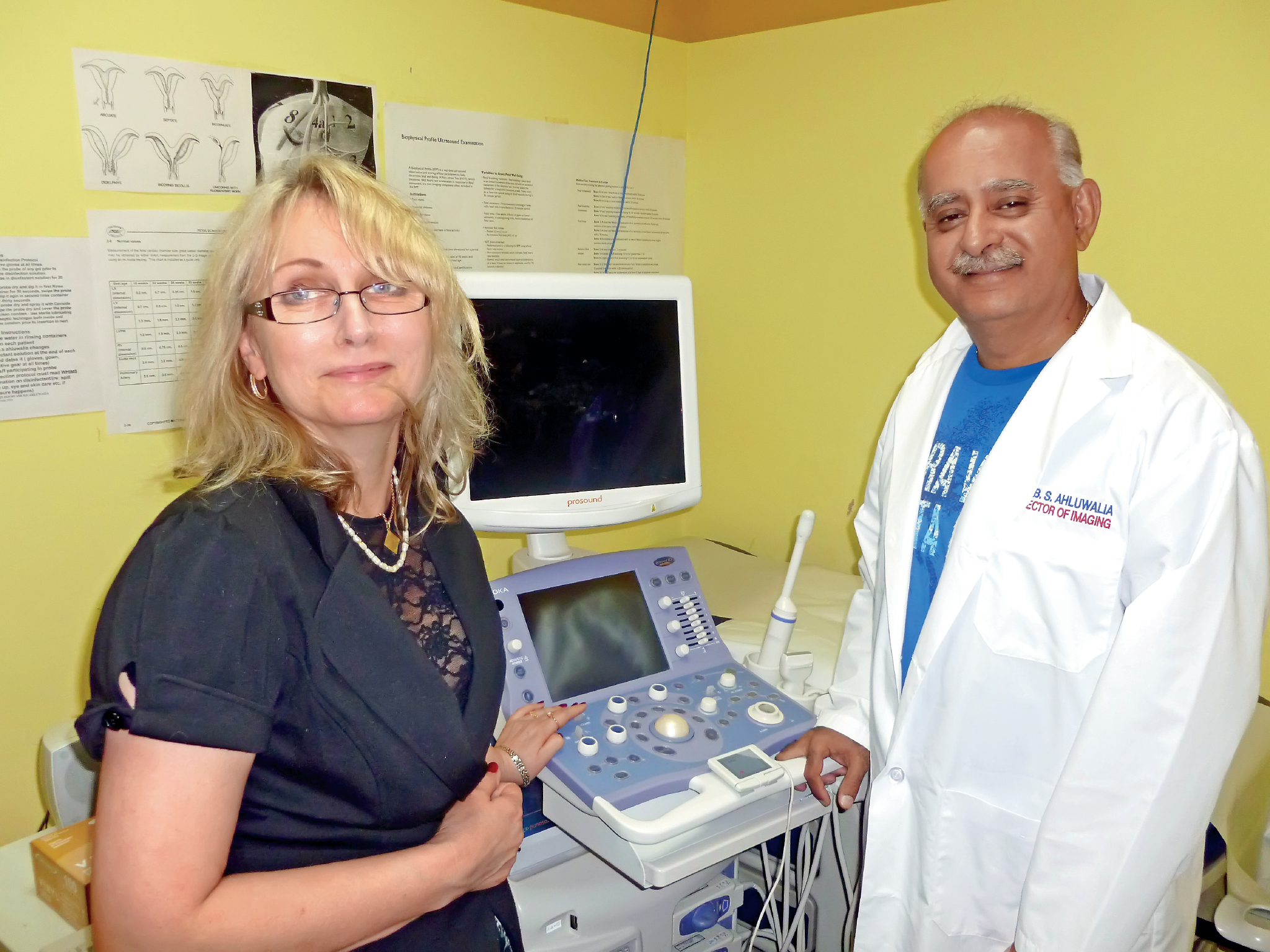 Dr Birinder Ahluwalia in his diagnostic imaging centre.[/caption]
Q: How were your initial days in Canada?
I stayed in Toronto for some time because I had to return to India to continue my post-graduation in internal medicine/cardiology and also attend my sister’s wedding.
During that brief stay, I enjoyed exploring the city by travelling around in TTC and trying to understand how this city was created on the grid system. Sometimes even these days,
I take TTC just to reminisce about my early days in Toronto.
So I went back to India, attended my sister’s wedding and continued my post-graduation studies and left India again. First I went to the UK and then Norway. In fact, I joined a hospital in Norway...they asked me to learn the Norwegian language and I started attending classes.
But soon I left for Canada because Norway was too cold and dark and they had six months of twilight. I don’t think I could have settled there.
Q: Tell us about the struggles that you went through in your initial days in Canada?
I started studying for my certification in medicine right away. To survive, I became a courier for the tax preparation company H&R Block.
Actually, there is an interesting story about how I got that job at H&R Block.
When I went for the interview for the H&R Block job, I was wearing a three-piece suit.
The lady at the interview seemed to be pretty impressed with the way I looked and my fluency in English.
She asked me: ‘What are your educational qualifications?’
I said: ‘Grade 10.’
She didn’t believe me and asked: ‘Tell me honestly.’
I said, ‘Will I get the job if I tell you my qualifications?’
She said, ‘Yes.’
I said: ‘I am a medical post-graduate!’
She had expected that.
So she said, ‘Yes, you have got the job, but I am sure you won’t stay here for long.’ And I didn’t.
[caption id="attachment_1074" align="alignnone" width="1920"]
Dr Birinder Ahluwalia in his diagnostic imaging centre.[/caption]
Q: How were your initial days in Canada?
I stayed in Toronto for some time because I had to return to India to continue my post-graduation in internal medicine/cardiology and also attend my sister’s wedding.
During that brief stay, I enjoyed exploring the city by travelling around in TTC and trying to understand how this city was created on the grid system. Sometimes even these days,
I take TTC just to reminisce about my early days in Toronto.
So I went back to India, attended my sister’s wedding and continued my post-graduation studies and left India again. First I went to the UK and then Norway. In fact, I joined a hospital in Norway...they asked me to learn the Norwegian language and I started attending classes.
But soon I left for Canada because Norway was too cold and dark and they had six months of twilight. I don’t think I could have settled there.
Q: Tell us about the struggles that you went through in your initial days in Canada?
I started studying for my certification in medicine right away. To survive, I became a courier for the tax preparation company H&R Block.
Actually, there is an interesting story about how I got that job at H&R Block.
When I went for the interview for the H&R Block job, I was wearing a three-piece suit.
The lady at the interview seemed to be pretty impressed with the way I looked and my fluency in English.
She asked me: ‘What are your educational qualifications?’
I said: ‘Grade 10.’
She didn’t believe me and asked: ‘Tell me honestly.’
I said, ‘Will I get the job if I tell you my qualifications?’
She said, ‘Yes.’
I said: ‘I am a medical post-graduate!’
She had expected that.
So she said, ‘Yes, you have got the job, but I am sure you won’t stay here for long.’ And I didn’t.
[caption id="attachment_1074" align="alignnone" width="1920"]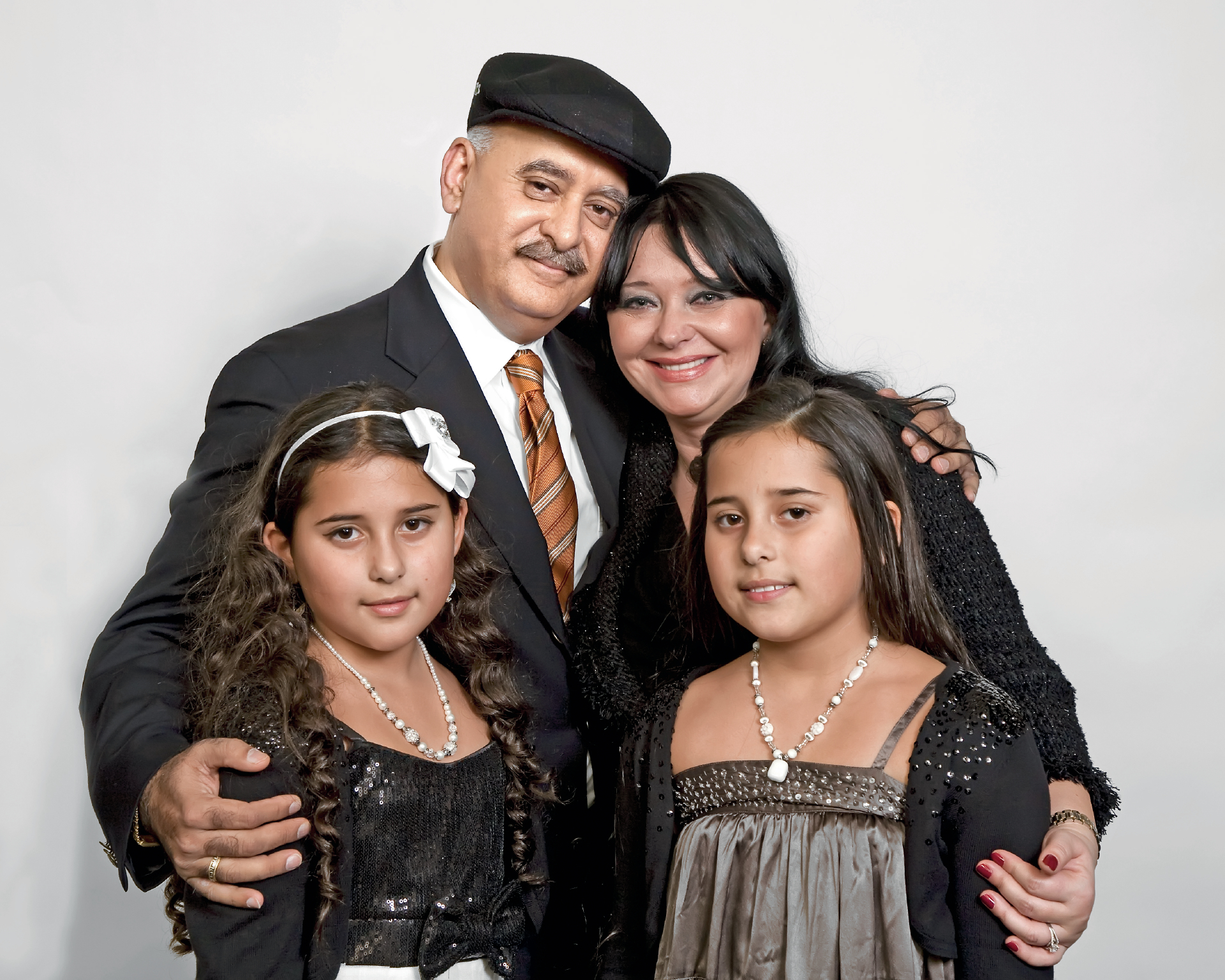 Dr Birinder Ahluwalia with his wife and daughters.[/caption]
Q: So how was your first job?
It gave me the opportunity to see the city - I enjoyed travelling around Toronto in my delivery van given to me by H&R Block.
It was a good experience. I was in that job for only two weeks. I got my first pay cheque for about $390 and I enjoyed it.
Q: Why did you quit that job?
I had applied at the Toronto Vascular Institute-Toronto General Hospital to be trained in diagnostic imaging. Dr Roger Donald Stronell interviewed me and I was selected.
Dr Stronell was a leader in diagnostic imaging. I used to wear a turban in those days.
Q: Why did you choose diagnostic imaging?
It was a new technology at that time. I happened to be in the right field in the right place at the right time. (I had topped pre-medical exams at Guru Nanak Dev University in Amritsar.)
Q: What was your first feeling when you got a break in the medical profession in Canada?
I felt great. I started earning a four-figure income, but financially my wife and I were very tight. I used to travel by subway.
To supplement my income, I started freelancing at a medical lab in Vaughan without telling my boss Dr Stronell. But one day, he saw my red eyes because of a lack of sleep and asked me the reason.
I told him that I work at night at a medical lab to supplement my income. He asked me to stop it immediately and raised my monthly salary by a significant amount. I was very happy that day. During this period, I got separation from my wife.
[caption id="attachment_1076" align="alignnone" width="1000"]
Dr Birinder Ahluwalia with his wife and daughters.[/caption]
Q: So how was your first job?
It gave me the opportunity to see the city - I enjoyed travelling around Toronto in my delivery van given to me by H&R Block.
It was a good experience. I was in that job for only two weeks. I got my first pay cheque for about $390 and I enjoyed it.
Q: Why did you quit that job?
I had applied at the Toronto Vascular Institute-Toronto General Hospital to be trained in diagnostic imaging. Dr Roger Donald Stronell interviewed me and I was selected.
Dr Stronell was a leader in diagnostic imaging. I used to wear a turban in those days.
Q: Why did you choose diagnostic imaging?
It was a new technology at that time. I happened to be in the right field in the right place at the right time. (I had topped pre-medical exams at Guru Nanak Dev University in Amritsar.)
Q: What was your first feeling when you got a break in the medical profession in Canada?
I felt great. I started earning a four-figure income, but financially my wife and I were very tight. I used to travel by subway.
To supplement my income, I started freelancing at a medical lab in Vaughan without telling my boss Dr Stronell. But one day, he saw my red eyes because of a lack of sleep and asked me the reason.
I told him that I work at night at a medical lab to supplement my income. He asked me to stop it immediately and raised my monthly salary by a significant amount. I was very happy that day. During this period, I got separation from my wife.
[caption id="attachment_1076" align="alignnone" width="1000"]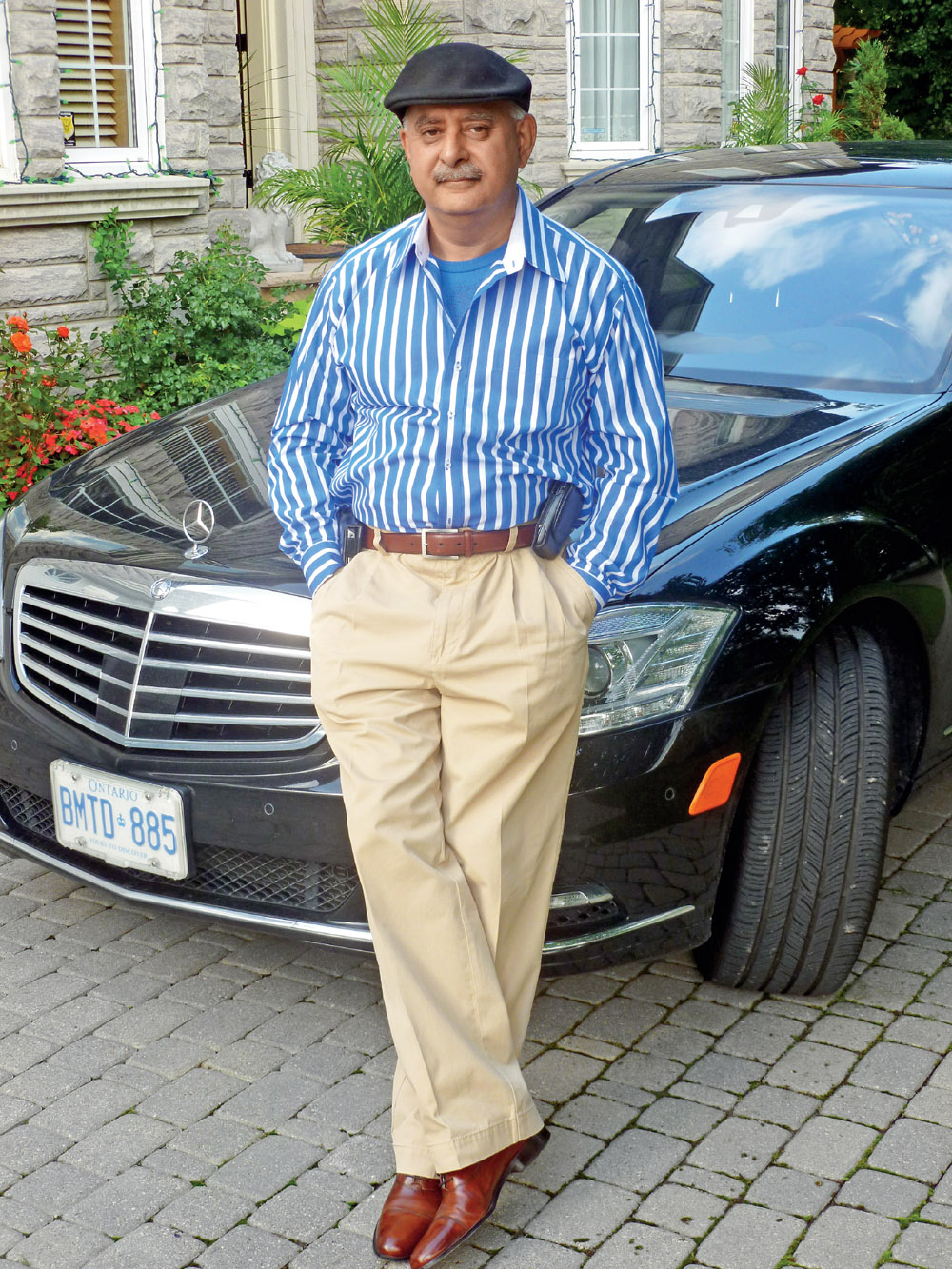 At home: Dr Birinder Ahluwalia.[/caption]
Q: So what happened next?
Within months, Dr Stronell gave me extra work and now I was earning a five-figure salary.
Becoming financially independent and being at the best place for diagnostic imaging was the second turning point in my life. It all happened before the end of 1986. Imagine a new immigrant making a five-figure salary a month within the first year of his arrival in Canada!
Dr Stronell was very generous and smart, but very possessive also. He would say: ‘For anything good in life, you have to pay.’ This has stuck with me throughout my life. I was lucky to have a great mentor who was a visionary and at the forefront of diagnostic imaging.
But then came the third turning point in my life.
Q: What was the third turning point?
In the middle of 1987 when I was having a few free days after finishing my work early, a physician (Dr C. Pangalos) at another clinic called me. He said he was adding ultrasound testing to his clinic. Since he was not trained in ultrasound, he asked me if I could help him. So I started going there to help him and my boss Dr Stronell didn’t know about it.
But a few months later, Dr Stronell called me one day and said: ‘Here is a report which is similar to what we do.’ I had done that report at the other clinic. So when I told him that I work part-time at the other physician’s clinic, he said: ‘Do you know I can reduce your salary by half in a day?’
I was shocked - and he was smiling.
I came home and called another doctor (Lloyd Padmore) and told him that I needed a place to set up my own clinic. He asked me to meet him next week and he got me a space in a clinic.
That’s how BSA Diagnostic Imaging was born. It was early 1988. Apart from my own practice, I also started freelancing with other clinics.
[caption id="attachment_1078" align="alignnone" width="1000"]
At home: Dr Birinder Ahluwalia.[/caption]
Q: So what happened next?
Within months, Dr Stronell gave me extra work and now I was earning a five-figure salary.
Becoming financially independent and being at the best place for diagnostic imaging was the second turning point in my life. It all happened before the end of 1986. Imagine a new immigrant making a five-figure salary a month within the first year of his arrival in Canada!
Dr Stronell was very generous and smart, but very possessive also. He would say: ‘For anything good in life, you have to pay.’ This has stuck with me throughout my life. I was lucky to have a great mentor who was a visionary and at the forefront of diagnostic imaging.
But then came the third turning point in my life.
Q: What was the third turning point?
In the middle of 1987 when I was having a few free days after finishing my work early, a physician (Dr C. Pangalos) at another clinic called me. He said he was adding ultrasound testing to his clinic. Since he was not trained in ultrasound, he asked me if I could help him. So I started going there to help him and my boss Dr Stronell didn’t know about it.
But a few months later, Dr Stronell called me one day and said: ‘Here is a report which is similar to what we do.’ I had done that report at the other clinic. So when I told him that I work part-time at the other physician’s clinic, he said: ‘Do you know I can reduce your salary by half in a day?’
I was shocked - and he was smiling.
I came home and called another doctor (Lloyd Padmore) and told him that I needed a place to set up my own clinic. He asked me to meet him next week and he got me a space in a clinic.
That’s how BSA Diagnostic Imaging was born. It was early 1988. Apart from my own practice, I also started freelancing with other clinics.
[caption id="attachment_1078" align="alignnone" width="1000"]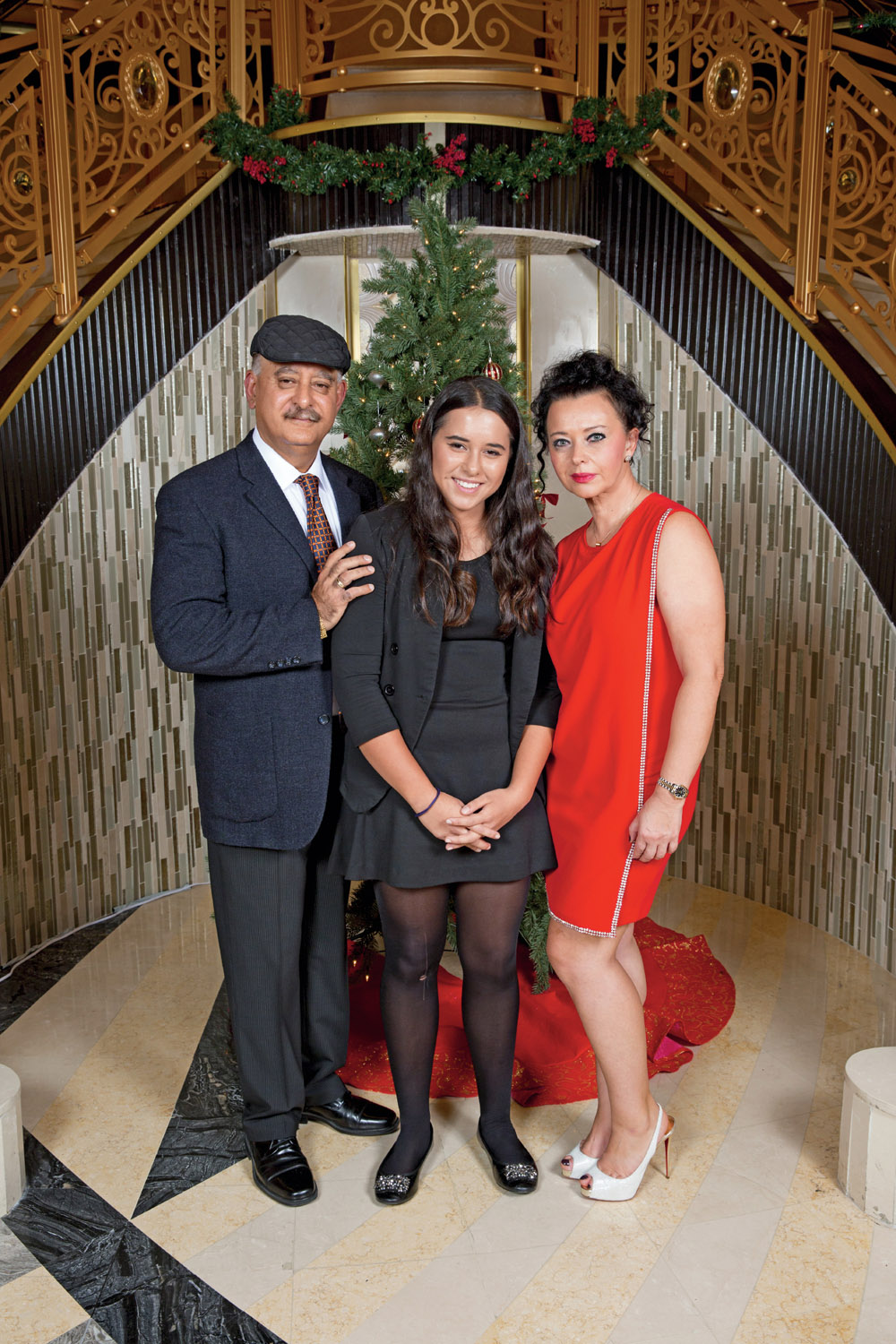 Dr Birinder Ahluwalia and family.[/caption]
Q: So when did you hit the big time?
By early 1994, I was making a significant six-figure income annually. You can call it big time, but it was just the beginning. Then came the fourth turning point in my life.
Q: What was the fourth turning point?
I was doing pretty well as I was having my own practice and freelancing at other clinics. However, in late 1995 something happened at one of the clinics where I was making a cool five-figure monthly income. Because of their internal politics, I decided to end my verbal contract with that clinic.
It was then that I decided to start my first large independent clinic on College Street in early 1996.
In 1997, I started the Sheppard-Kennedy clinic which became the largest in Canada over time. It is still one of the largest in Canada. We have been going from strength to strength since then.
Q: You said it took you 14 long years to get remarried. Why?
First, I was busy raising my daughter Sohni. Second, I didn’t meet the right person. When I met the right person, Sohni was 15 and she was okay if I remarried. That’s how I married Diana in 2000.
We are proud parents of our twin daughters. And Sohni is just finishing her law.
Q: Did you take up the medical profession just because you wanted to follow in your father’s footsteps?
My whole family was in the medical profession. My grandfather was a physician who went to serve in Africa, my father was a doctor. When you grow up with the medical profession around you, I think it is natural that you will follow the same profession. My two sisters are also in this profession.
[caption id="attachment_1081" align="alignnone" width="1000"]
Dr Birinder Ahluwalia and family.[/caption]
Q: So when did you hit the big time?
By early 1994, I was making a significant six-figure income annually. You can call it big time, but it was just the beginning. Then came the fourth turning point in my life.
Q: What was the fourth turning point?
I was doing pretty well as I was having my own practice and freelancing at other clinics. However, in late 1995 something happened at one of the clinics where I was making a cool five-figure monthly income. Because of their internal politics, I decided to end my verbal contract with that clinic.
It was then that I decided to start my first large independent clinic on College Street in early 1996.
In 1997, I started the Sheppard-Kennedy clinic which became the largest in Canada over time. It is still one of the largest in Canada. We have been going from strength to strength since then.
Q: You said it took you 14 long years to get remarried. Why?
First, I was busy raising my daughter Sohni. Second, I didn’t meet the right person. When I met the right person, Sohni was 15 and she was okay if I remarried. That’s how I married Diana in 2000.
We are proud parents of our twin daughters. And Sohni is just finishing her law.
Q: Did you take up the medical profession just because you wanted to follow in your father’s footsteps?
My whole family was in the medical profession. My grandfather was a physician who went to serve in Africa, my father was a doctor. When you grow up with the medical profession around you, I think it is natural that you will follow the same profession. My two sisters are also in this profession.
[caption id="attachment_1081" align="alignnone" width="1000"]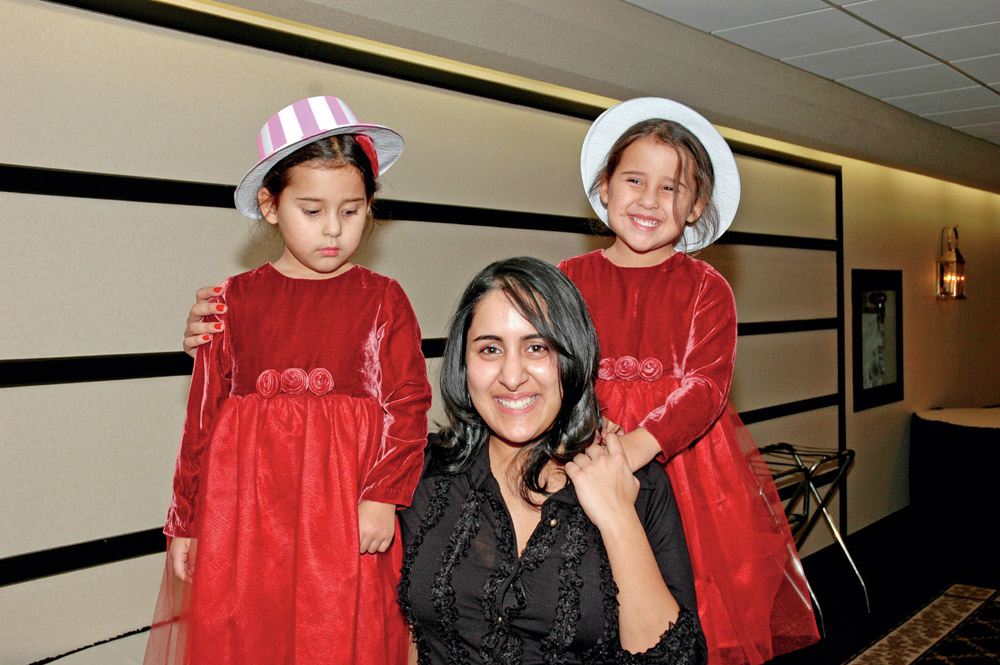 Dr Birinder Ahluwalia's daughters.[/caption]
Q: Being political, what kind of politics is your cup of tea?
Not to compromise on principles with your political party. You have an opportunity to serve people - so do it right. Serve for the public good.
Q: Your biggest weakness.
My children. They are also my biggest strength.
Q: Your biggest asset.
Again, my children.
Q: If you were not a doctor, what would you be?
I don’t think I will do anything else.
It is the most rewarding and satisfying profession. Yes, it is business for me, but its nobility transcends the pettiness of business. Thank God, I became a businessman as well. I just enjoy what I do. I never haggle with people.
Q: Who are your heroes in life?
Two persons. One was my father DrBalbir Singh Ahluwalia and the other is my former mentor Dr R.D. Stronell. Both had great values, and just watching them taught me a lot about life. I am very thankful to them.
[caption id="attachment_1149" align="alignnone" width="1000"]
Dr Birinder Ahluwalia's daughters.[/caption]
Q: Being political, what kind of politics is your cup of tea?
Not to compromise on principles with your political party. You have an opportunity to serve people - so do it right. Serve for the public good.
Q: Your biggest weakness.
My children. They are also my biggest strength.
Q: Your biggest asset.
Again, my children.
Q: If you were not a doctor, what would you be?
I don’t think I will do anything else.
It is the most rewarding and satisfying profession. Yes, it is business for me, but its nobility transcends the pettiness of business. Thank God, I became a businessman as well. I just enjoy what I do. I never haggle with people.
Q: Who are your heroes in life?
Two persons. One was my father DrBalbir Singh Ahluwalia and the other is my former mentor Dr R.D. Stronell. Both had great values, and just watching them taught me a lot about life. I am very thankful to them.
[caption id="attachment_1149" align="alignnone" width="1000"]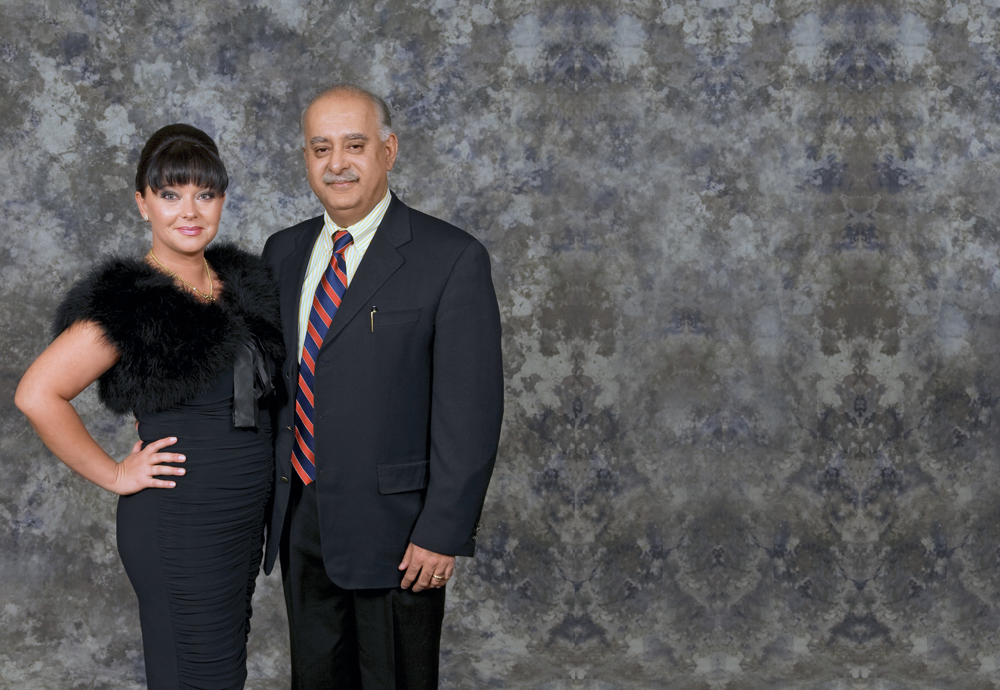 Dr Birinder Ahluwalia and wife Diana.[/caption]
Q: In the city (Toronto) of Dr cabbies, do you think you have been plain lucky to succeed in life?
Well, I was motivated right from the beginning to succeed. Even when I had the courier’s job, I was proactively looking for opportunities in the medical profession, applying and trying to get interviews. I was preparing for my exams.
When I didn’t make enough money from a job, I took part-time work elsewhere to make more money.
It must also be said that I happened to work with the best people, learn from the best, and deliver the very best. I walked away from conflict and established my own business.
Q: One thing that you miss the most in life.
My father. I wish he could have been around today to be with his grandchildren. He would have been 83-84 this year. I would have made him a drink just to say: ‘Thank you, dad’.
Q: What would you say about your mom?
Thank you, mom, for teaching me how to be compassionate.
Q: One thing about yourself that you wish you could change.
I should have been more compromising in my 30s and 40s.
[caption id="attachment_1079" align="alignnone" width="1000"]
Dr Birinder Ahluwalia and wife Diana.[/caption]
Q: In the city (Toronto) of Dr cabbies, do you think you have been plain lucky to succeed in life?
Well, I was motivated right from the beginning to succeed. Even when I had the courier’s job, I was proactively looking for opportunities in the medical profession, applying and trying to get interviews. I was preparing for my exams.
When I didn’t make enough money from a job, I took part-time work elsewhere to make more money.
It must also be said that I happened to work with the best people, learn from the best, and deliver the very best. I walked away from conflict and established my own business.
Q: One thing that you miss the most in life.
My father. I wish he could have been around today to be with his grandchildren. He would have been 83-84 this year. I would have made him a drink just to say: ‘Thank you, dad’.
Q: What would you say about your mom?
Thank you, mom, for teaching me how to be compassionate.
Q: One thing about yourself that you wish you could change.
I should have been more compromising in my 30s and 40s.
[caption id="attachment_1079" align="alignnone" width="1000"]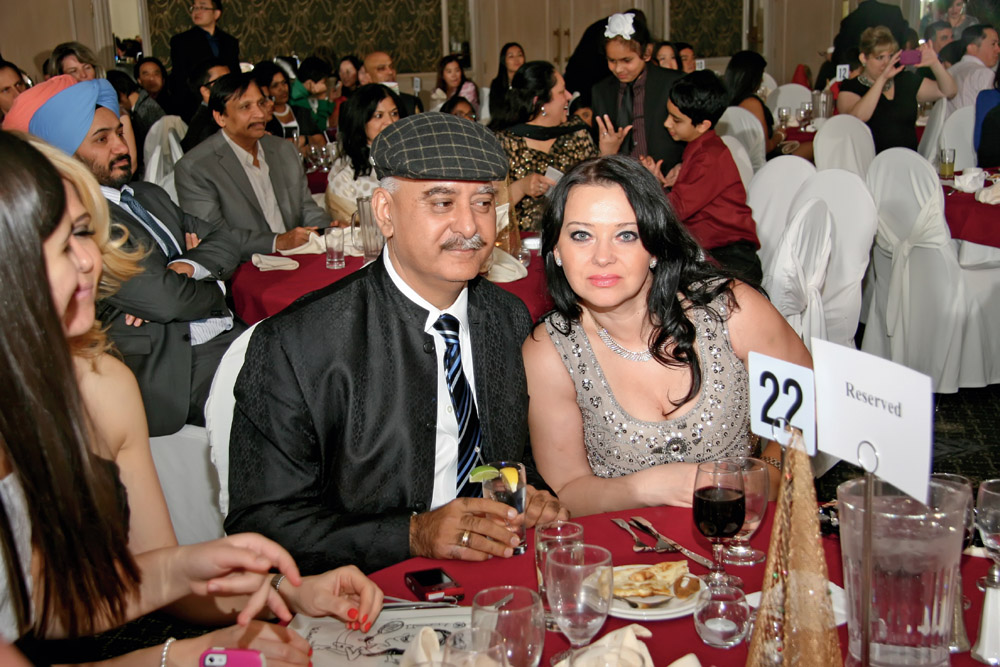 Dr Birinder Ahluwalia and wife at their annual Christmas party[/caption]
Q: What was the lowest point in your life?
When my two daughters got really sick one after another a few years ago. One of them had pneumonia and she was in hospital for 10 days. Believe me, I lost 10 pounds of weight in those 10 days!
Q: Do you believe in God?
Yes, there is a higher power which watches over us. As the saying goes, man proposes, God disposes.
Q: Do you have any superstitions?
Yes, I have two big superstitions. One is the fear of number 13 and the other is when a cat crosses my path.
Lots of bad things have happened to me on the 13th. My car has broken into on the 13th, my flights got cancelled on the 13th and I received bad mail on the 13th. So I am very superstitious about the number 13.
I don’t make big decisions on the 13th. I never start any important work on the 13th.
I am also stricken with fear when a cat crosses my path. When it happens, I stop and take a few steps back.
Q: What do you do if a cat crosses your path on a busy road?
I drive to the edge of the road and stop. In fact, I have even reversed my car when I could possibly do and the traffic allowed me (laughs).
Q: How do you relax after a day’s hard work?
By being with my children.
Q: Any hobbies.
Yes, I have always had hobbies which have changed over time. When I was very young, I used to play tennis, cricket, hockey, etc. Then I took up badminton in which I was our college champion. I also played billiards and became the state champion.
Nowadays, my hobbies include travelling, reading and sometimes playing badminton and tennis.
[caption id="attachment_1083" align="alignnone" width="1000"]
Dr Birinder Ahluwalia and wife at their annual Christmas party[/caption]
Q: What was the lowest point in your life?
When my two daughters got really sick one after another a few years ago. One of them had pneumonia and she was in hospital for 10 days. Believe me, I lost 10 pounds of weight in those 10 days!
Q: Do you believe in God?
Yes, there is a higher power which watches over us. As the saying goes, man proposes, God disposes.
Q: Do you have any superstitions?
Yes, I have two big superstitions. One is the fear of number 13 and the other is when a cat crosses my path.
Lots of bad things have happened to me on the 13th. My car has broken into on the 13th, my flights got cancelled on the 13th and I received bad mail on the 13th. So I am very superstitious about the number 13.
I don’t make big decisions on the 13th. I never start any important work on the 13th.
I am also stricken with fear when a cat crosses my path. When it happens, I stop and take a few steps back.
Q: What do you do if a cat crosses your path on a busy road?
I drive to the edge of the road and stop. In fact, I have even reversed my car when I could possibly do and the traffic allowed me (laughs).
Q: How do you relax after a day’s hard work?
By being with my children.
Q: Any hobbies.
Yes, I have always had hobbies which have changed over time. When I was very young, I used to play tennis, cricket, hockey, etc. Then I took up badminton in which I was our college champion. I also played billiards and became the state champion.
Nowadays, my hobbies include travelling, reading and sometimes playing badminton and tennis.
[caption id="attachment_1083" align="alignnone" width="1000"]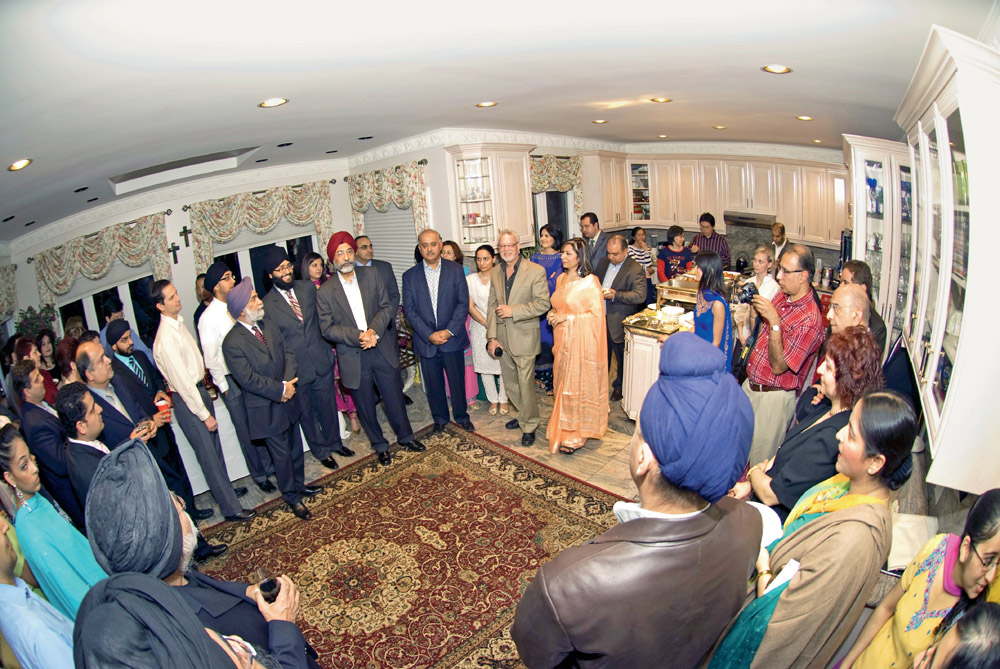 Dr Birinder Ahluwalia's home party.[/caption]
Q: What is your favourite dish?
Rajma-chawal (rice with kidney beans) prepared by my mom.
Q: What books would you recommend others to read?
Two books.
The first is the novel Shogun. It is a fascinating book about the Japanese empire, war, intrigues, betrayals, etc.
The second is The Fountainhead. Again, it is a tale of love, betrayal, colonialism, etc., etc.
Q: Dr Birinder Ahluwalia, how would you like to be remembered?
I have yet a life to live.
(Updated: This article first appeared here on October 20, 2017)
Dr Birinder Ahluwalia's home party.[/caption]
Q: What is your favourite dish?
Rajma-chawal (rice with kidney beans) prepared by my mom.
Q: What books would you recommend others to read?
Two books.
The first is the novel Shogun. It is a fascinating book about the Japanese empire, war, intrigues, betrayals, etc.
The second is The Fountainhead. Again, it is a tale of love, betrayal, colonialism, etc., etc.
Q: Dr Birinder Ahluwalia, how would you like to be remembered?
I have yet a life to live.
(Updated: This article first appeared here on October 20, 2017)

Indian international students: The University of Toronto, which is Canada's premier university, has reported a 57 percent jump in applications for admission from students from India
The Canadian Bazaar TORONTO: The number of Indian international students seeking admission to Canadian institutions is increasing very rapidly. The University of Toronto, which is Canada's premier university, has reported a 57 percent jump in applications for admission from students from India Overall, the university has reported a 20 percent jump in foreign students seeking admission. Most of these foreign students are Indians and Chinese. Most international students are now looking at Canadian universities because of the country's liberal, migrant-friendly image serving as an important attraction, says BBC. Ted Sargent, vice president (international) of the University of Toronto, has been quoted as saying that in addition to offering top-tier universities, Canada is sending a "message about being open to the world’’ in the light to the contemporary political climate in the US and the UK. "Events in the US and the UK have reverberated around the world. It makes people go back and think again.’’ Currently, there are more than 350,000 international students in Canada – which almost one percent of Canada’s population. Out of these, about 40,000 are Indian students mostly from Punjab. Over 8 per cent of all international students going abroad for studies choose Canada because the country offers them quick passage to permanent residence. Foreign students pump billions of dollars into Canada’s economy.
Siddhartha's Kitchen is credited with putting Indian cuisine on the food map of western Canada
By Gurmukh Singh VANCOUVER: Indian (read Punjabi) food is going mainstream in Canada thanks to the growing diaspora in this country. Not surprisingly, tandoori kebab, butter chicken, dal makhani, etc, are increasing become the delicacies of choice for Canadians. And the ever mushrooming Indian restaurants in cities are a testament to the popularity of desi food. This spurt in popularity can be ascribed to the innovation and western touch brought to Indian cuisine by many young restaurant owners and chefs. Siddhartha's Kitchen of Chef Siddharth Choudhary has been given the Best Asian Food in Vancouver Award for taking Indian cuisine to the mainstream. Called Chef Sid, he has been credited with putting Indian cuisine on the food map of western Canada. [caption id="attachment_814" align="alignnone" width="800"]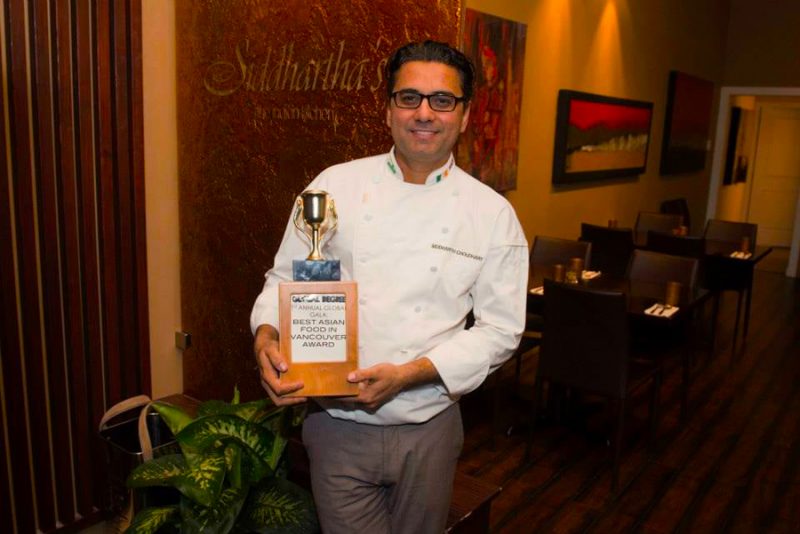 Chef Sid with his trophy.[/caption]
Siddhartha's Kitchen sits in Vancouver’s widely popular Commercial Drive - which has often been rated as one of the most happening places in North America.
Among its regular clients are Hollywood star Max Martini and many other celebrities. And Chef Sid has played host to many Bollywood stars, including Jaya Bachchan, Gulshan Grover, etc.
"Whenever Hollwyood star Max Martini is in Vancouver, he always comes to eat at my restaurant. He says my restaurant offers the best Indian food anywhere in North America,’’ gushes Chef Siddharth Choudhary who worked at Delhi’s Ashoka Hotel for three years before moving to Ireland in 2000 to work as a main chef for a five-star hotel chain there.
"I am a Punjabi chef, but today my skills are a blend of different cuisine styles. In India, my specialty was Indian cuisine. In Ireland, my specialty was continental and Italian food. Today, my specialty is Indian cuisine with western gourmet-style presentation,’’ says Siddharth who moved to Canada from Ireland in 2007.
[caption id="attachment_815" align="alignnone" width="800"]
Chef Sid with his trophy.[/caption]
Siddhartha's Kitchen sits in Vancouver’s widely popular Commercial Drive - which has often been rated as one of the most happening places in North America.
Among its regular clients are Hollywood star Max Martini and many other celebrities. And Chef Sid has played host to many Bollywood stars, including Jaya Bachchan, Gulshan Grover, etc.
"Whenever Hollwyood star Max Martini is in Vancouver, he always comes to eat at my restaurant. He says my restaurant offers the best Indian food anywhere in North America,’’ gushes Chef Siddharth Choudhary who worked at Delhi’s Ashoka Hotel for three years before moving to Ireland in 2000 to work as a main chef for a five-star hotel chain there.
"I am a Punjabi chef, but today my skills are a blend of different cuisine styles. In India, my specialty was Indian cuisine. In Ireland, my specialty was continental and Italian food. Today, my specialty is Indian cuisine with western gourmet-style presentation,’’ says Siddharth who moved to Canada from Ireland in 2007.
[caption id="attachment_815" align="alignnone" width="800"]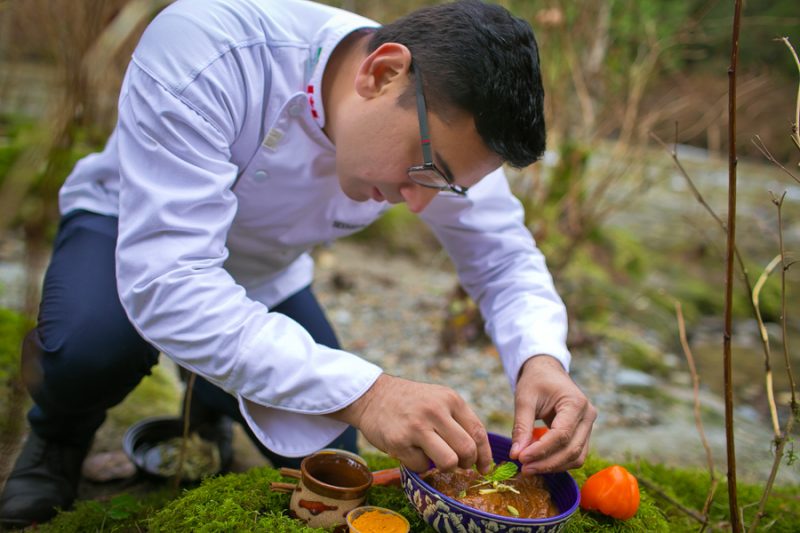 Chef Sid in action.[/caption]
Explaining the growing craze for Indian food, he says, "It is tasty, yummy, mouth-watering...everybody is getting hooked to it now. Previously, business people were running restaurants with untrained staff who prepared oily, overcooked food. But now trained chefs have brought pride to Indian cuisine. Indian food is no more oily, over-spicy, greasy and overcooked. They are experimenting, they are cooking, roasting, braising...they know overcooking is a crime. That’s why our cuisine is now becoming very popular among mainstream communities.’’
Siddharth is one of the few chefs who are also run their business. "Because I am chef as well as owner, I constantly innovate by trying various combination of Indian and Canadian cuisines. One India-Canada dish I have created and which has become very popular is local smoked salmon served with coconut chutney.’’
[caption id="attachment_816" align="alignnone" width="800"]
Chef Sid in action.[/caption]
Explaining the growing craze for Indian food, he says, "It is tasty, yummy, mouth-watering...everybody is getting hooked to it now. Previously, business people were running restaurants with untrained staff who prepared oily, overcooked food. But now trained chefs have brought pride to Indian cuisine. Indian food is no more oily, over-spicy, greasy and overcooked. They are experimenting, they are cooking, roasting, braising...they know overcooking is a crime. That’s why our cuisine is now becoming very popular among mainstream communities.’’
Siddharth is one of the few chefs who are also run their business. "Because I am chef as well as owner, I constantly innovate by trying various combination of Indian and Canadian cuisines. One India-Canada dish I have created and which has become very popular is local smoked salmon served with coconut chutney.’’
[caption id="attachment_816" align="alignnone" width="800"]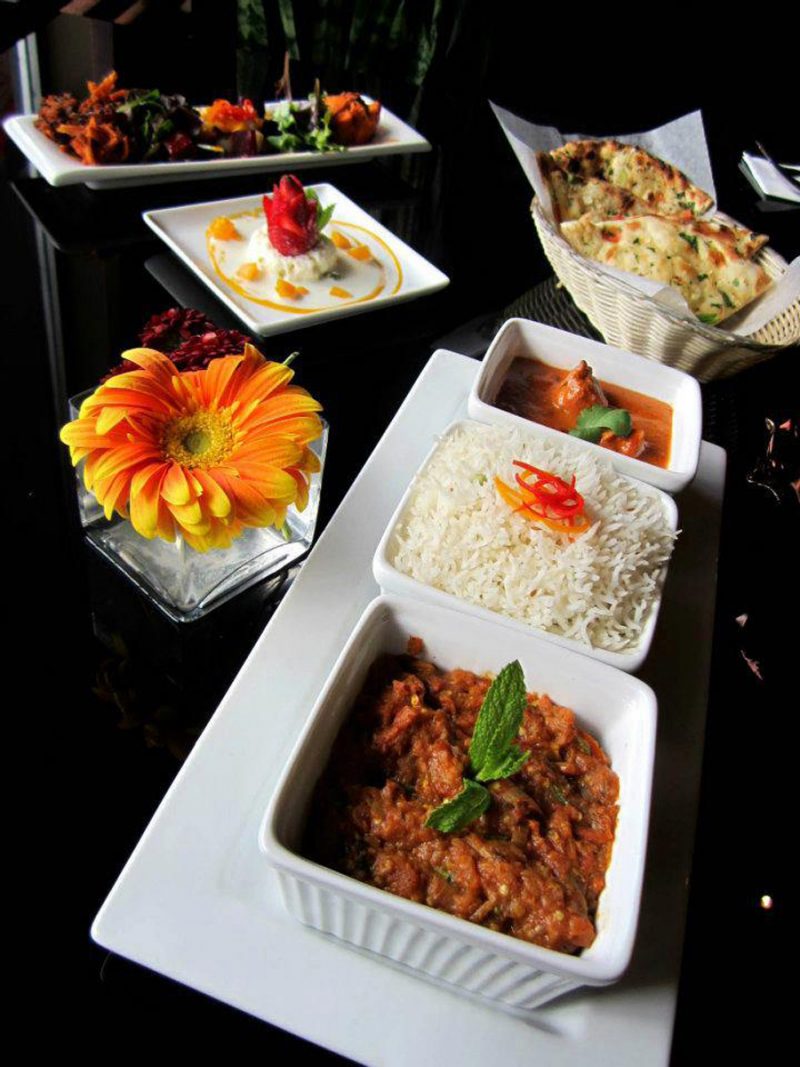 Chef Sid's dishes.[/caption]
Explaining why Indian food served continental-style has become very popular, Chef Siddharth Choudhary says, "This adds to the visual effect...food should always look visually appealing and smell good. Indian cuisine served continental style is such a temptation.’’
He says Indian cuisine will soon become an integral part western menu charts.
And like so many in the Punjabi diaspora in Canada, Chef Sid is also obsessed with politics in India.
"Because Indian politicians have no accountability and anything that they do also impacts us here, I am financing a project in India under which people will prepare digital report cards of ministers, MPs, MLAs, etc., so that politicians held accountable as is the custom in Canada.’’
He says he has named his project Swarnimbharat. "It will be like Trip Advisor or Yelp for Indian politics. I am very serious about it.’’
READ NEXT: Moti Mahal in Gerrard India Bazaar is one of best places for Indian food
Chef Sid's dishes.[/caption]
Explaining why Indian food served continental-style has become very popular, Chef Siddharth Choudhary says, "This adds to the visual effect...food should always look visually appealing and smell good. Indian cuisine served continental style is such a temptation.’’
He says Indian cuisine will soon become an integral part western menu charts.
And like so many in the Punjabi diaspora in Canada, Chef Sid is also obsessed with politics in India.
"Because Indian politicians have no accountability and anything that they do also impacts us here, I am financing a project in India under which people will prepare digital report cards of ministers, MPs, MLAs, etc., so that politicians held accountable as is the custom in Canada.’’
He says he has named his project Swarnimbharat. "It will be like Trip Advisor or Yelp for Indian politics. I am very serious about it.’’
READ NEXT: Moti Mahal in Gerrard India Bazaar is one of best places for Indian food 
Shah Rukh Farah Khan friendship: Shah Rukh is her `most handsoem friend" in Bollywood, says Farah
News East West BOLLYWOOD: After attending King Khan's his pre-Diwali bash at his Mannat residence, filmmaker Farah Khan says Shah Rukh Khan is her "most handsome friend" in Bollywood. Sharing an image of herself with Shah Rukh on social media, Farah said, "With my most handsome friend Shah Rukh Khan." She also posted a picture of herself with Karan Johar, Aanand Rai and Himanshu Sharma who were at the bash, saying, "At Mannat with old friends and new… Shah Rukh Khan, Karan Johar Aanand L Rai and Himanshu Sharma.'' READ NEXT: Shah Rukh Khan's cousin in Pakistan poll fray
Sunny Leone daughter: Nisha Kaur Weber is two years old
News East west BOLLYWOOD: Bollywood actress Sunny Leone and her husband Daniel Weber, who are holidaying in the US, celebrated the second birthday of their daughter Nisha. Sunny and her husband adopted the orphan infant in July this year. A beaming mom, Sunny tweeted, "Such an amazing day today to see all our friends and family. Our baby girl turns 2. The light of our lives! Happy birthday Nisha." Daniel shared a video on Twitter, writing, "Surprising your baby girl for her second birthday. Priceless. Love you forever Nisha Kaur Weber.'' Congrats to the little girl, mom Sunny Leone and dad Daniel Weber.
Poonam Dhillon was Femina Miss India in 1977 before she joined Bollywood
Agencies
MUMBAI: Poonam Dhillon’s daughter Paloma Thakeria Dhillon is all set to make her Bollywood debut.
Paloma,26, has been signed by Rajshri Productions to star opposite Sunny Deol's son Rajveer Deol in the lead role.
The excited mom went on Instagram, saying, "Congratulations darling Paloma Thakeria Dhillon on your superb launch with the most prestigious Rajshri Films, Sooraj Barjatya Avnish Barjatya. Your amazing hard work, commitment, and talent are rewarded with this beautiful launch. God Bless you with super success and may you shine in all you do. Love you. So proud of you."
Will Paloma be the next big thing in Bollywood?
She could be, like her gorgeous mom.
[caption id="attachment_843" align="alignnone" width="750"] Paloma Dhillon Thakeria.[/caption]
Paloma Dhillon Thakeria.[/caption]
Paloma can be called Gujju Sardarni because her mom Poonam Dhillon is a Sikh and her filmmaker dad Ashok Thakeria is Gujarati. Indeed, Paloma’s mom was one of the most gorgeous women at her prime.
She (Poonam) was crowned the Miss Young India at the age of 16. She then went on to win the Femina Miss India in 1977.
Poonam's beauty was noticed by Yash Chopra and he opened the Bollywood gates for the young Sardarni by offering her a role in his super hit Trishul (1978).
Poonam was a student in Chandigarh back then. She had signed for Trishul just for the fun of doing a film as she had no intention of being a film star. In fact, her intention was to have some fun while doing the film and then go back to Chandigarh to pursue further studies. But destiny had other plans for her.
[caption id="attachment_844" align="alignnone" width="750"]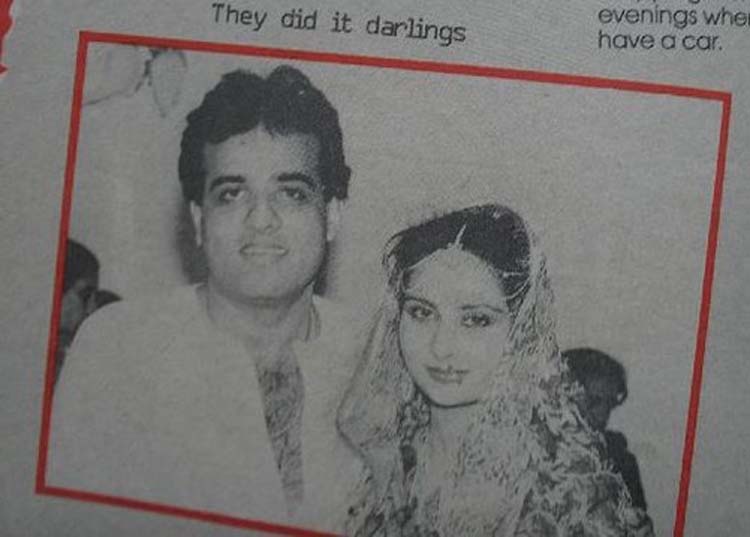 Poonam Dhillon wedding picture.[/caption]
Poonam Dhillon wedding picture.[/caption]
Impressed by her performance, Yash Chopra gave her the lead role in Noorie (1978) which was again a super-hit and she was was nominated for the Filmfare Award For Best Actress.
Since Poonam was still a student when Noorie was being shot in Jammu and Mumbai, Yash Chopra had to arrange her flights in such a way she could take her exams in the morning and join the shooting in the evening.
As Poonam got foothold in Bollywood, Yash Chopra’s assistant Ramesh Talwar, who was the script writer of Noorie, was the first person she got into a relationship.
There were reports at that time Poonam and Ramesh had got secretly engaged and that Ramesh had bought her a home.
In fact, at an event when Rishi Kapoor, who was seated next to Poonam, was asked by a photographer to get closer to the actress so that he could have their photo together. But Rishi Kapoor had told the photographer, "Don’t be silly, yaar. She is Ramesh Talwar’s exclusive property."
Poonam ended her relationship with Ramesh Talwar after some nasty reports in the media about herself and Yash Chopra.
[caption id="attachment_845" align="alignnone" width="750"]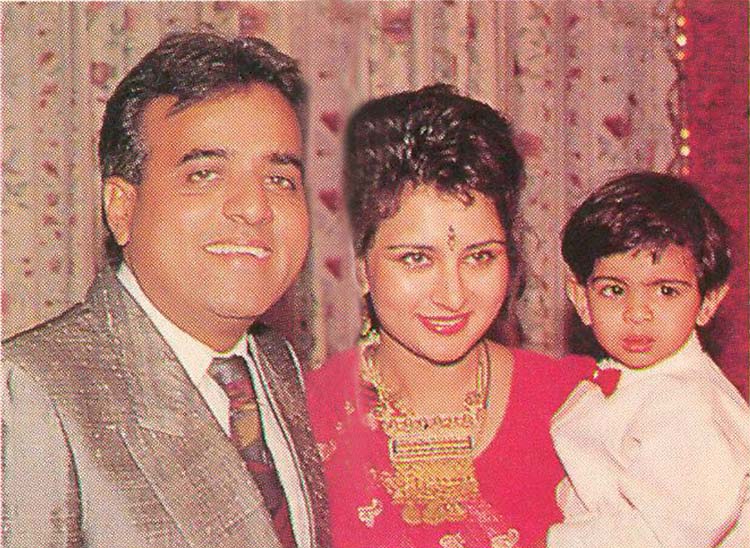 Poonam Dhillon with husband Ashok Thakeria and son Anmol.[/caption]
Poonam Dhillon with husband Ashok Thakeria and son Anmol.[/caption]
Poonam also had a brief affair with Raj Sippy after her break-up with Ramesh Talwar.
Then she was introduced to Ashok Thakeria by producer-director Umesh Mehra and his wife Ritu during a Holi party at their Khandala farmhouse. Poonam had just lost her father and was depressed when she met Ashok who helped her get over her grief and developed feelings for her.
There were reports that Ashok Thakeria used to send her flowers daily till Poonam said `yes’ to marry him. They tied the knot in 1988.
The couple had two children. Poonam became a stay-at-home mom to raise the kids – first their son Anmol and then daughter Paloma.
But their marriage started turning sour as Poonam felt ignored by her busy husband. There used to be fights between the two. Once Poonam reportedly told a friend about her uncaring husband, "I don’t feel connected to him the way I used to earlier and I don’t have him to myself even on a Sunday.’’
[caption id="attachment_846" align="alignnone" width="750"]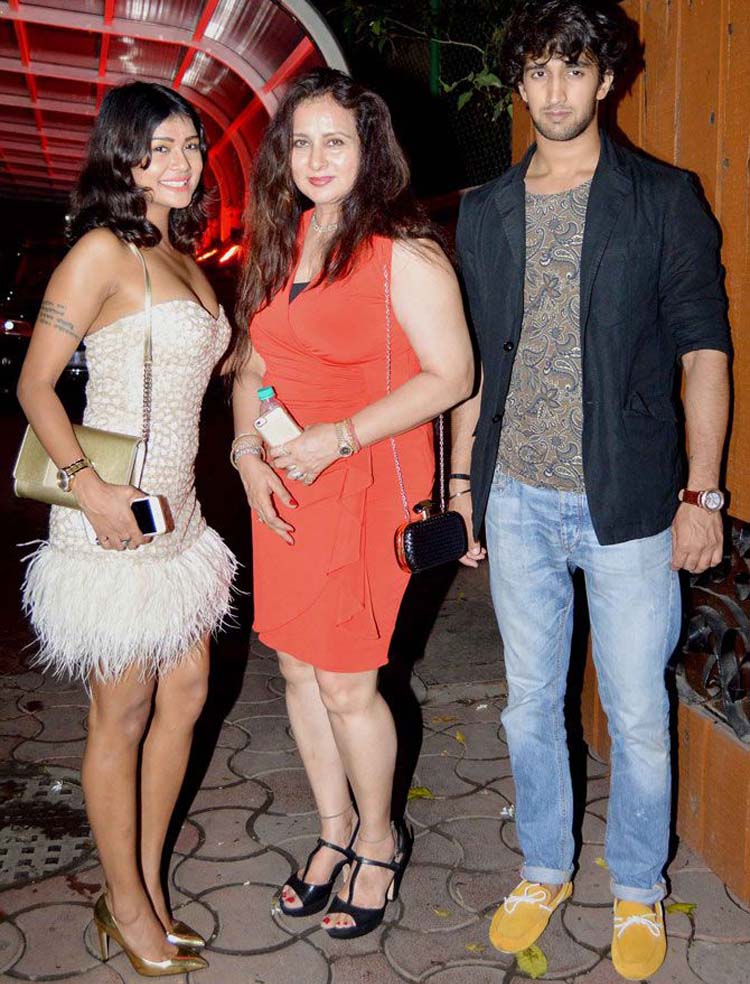 Poonam Dhillon with her son Anmol and daughter Paloma.[/caption]
Poonam Dhillon with her son Anmol and daughter Paloma.[/caption]
As Poonam got alienated from her husband, there were reports of Ashok Thakeria having an affair with another woman. When Poonam confronted him, her suspicion proved to be true.
As if in revenge, Poonam also allegedly got involved with Hong Kong-based businessman Kiku. She would fly to Hong Kong to see him.
Poonam virtually ended her mariage to Ashok when she left his home in October 1997 and moved to live with her sister Rishma Pai who was a doctor in Mumbai.
Poonam Dhillon and Ashok Thakeria finally divorced in 1997.
Poonam has stayed single since then. (Updated: This article appeared here first on October 16, 2017)
READ NEXT: A teetotaler and vegetarian, Amitabh Bachchan can write with both hands

Indian Pakistani marriages that made headlines involved Pakistani sports stars and famous Indian women
Agencies NEW DELHI: Speaking about Indian Pakistani marriages, there have been many unions and love affairs between Pakistani men and women. Yes, men are always from Pakistan and women are always from India... says a lot about the cultural differences between the two countries - one secular and the other an Islamic nation. Here is a look at the five most famous Indian women who got hooked up with famous Pakistani men: 1: Reena Roy and Mohsin Khan: This was one of the most high-profile Indian Pakistani marriages. Dashing Pakistani cricketer Mohsin Khan, who played for his country between 1977 to 1986, swept Bollywood actress Reena Roy off her feet in 1983 when she was at the peak of her film career. The two married in 1983 and had a daughter named Sanam. [caption id="attachment_856" align="alignnone" width="800"]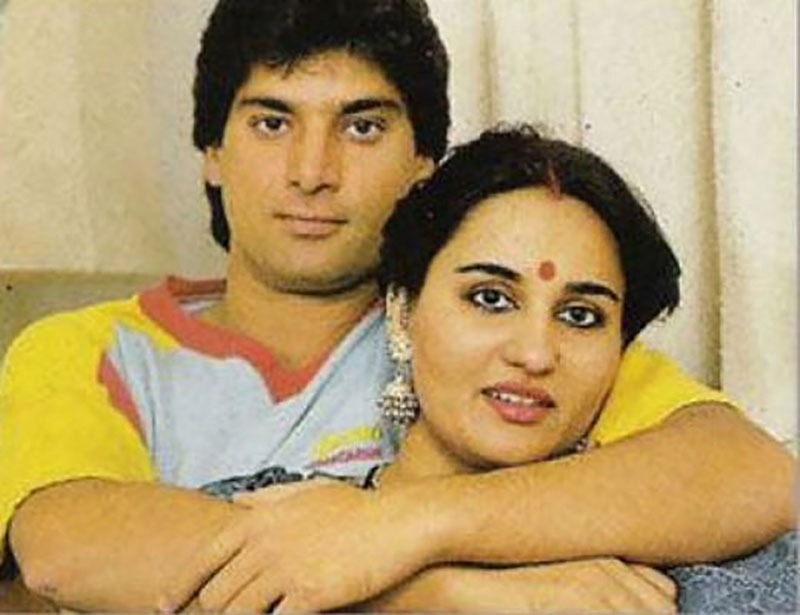 Bollywood actress Reena Roy fell for handsome Pakistani cricketer Mohsin Khan.[/caption]
Even as Reena cut down on her films after her marriage, Mohsin turned actor and acted in over a dozen Bollywood films, including the 1991 thriller Saathi.
But their marriage didn’t last and the couple divorced. Mohsin got custody of their daughter Sanam and moved back to Karachi. But when he remarried, Reena got custody of Sanam.
2: Rita Luthra and Zaheer Abbas: Yet another of famous Indian Pakistani marriages involved a Pakistani cricketer. Zaheer Abbas was considered Asia’s Bradman at the top of his career. The two met in the1980s in England where Zaheer was playing county cricket for Gloucestershire and Luthra was an interior design student.
The two married in 1988 and Rita Luthra changed her name to Samina Abbas. The couple live in Karachi where Rita runs her interior designing business.
[caption id="attachment_857" align="alignnone" width="800"]
Bollywood actress Reena Roy fell for handsome Pakistani cricketer Mohsin Khan.[/caption]
Even as Reena cut down on her films after her marriage, Mohsin turned actor and acted in over a dozen Bollywood films, including the 1991 thriller Saathi.
But their marriage didn’t last and the couple divorced. Mohsin got custody of their daughter Sanam and moved back to Karachi. But when he remarried, Reena got custody of Sanam.
2: Rita Luthra and Zaheer Abbas: Yet another of famous Indian Pakistani marriages involved a Pakistani cricketer. Zaheer Abbas was considered Asia’s Bradman at the top of his career. The two met in the1980s in England where Zaheer was playing county cricket for Gloucestershire and Luthra was an interior design student.
The two married in 1988 and Rita Luthra changed her name to Samina Abbas. The couple live in Karachi where Rita runs her interior designing business.
[caption id="attachment_857" align="alignnone" width="800"]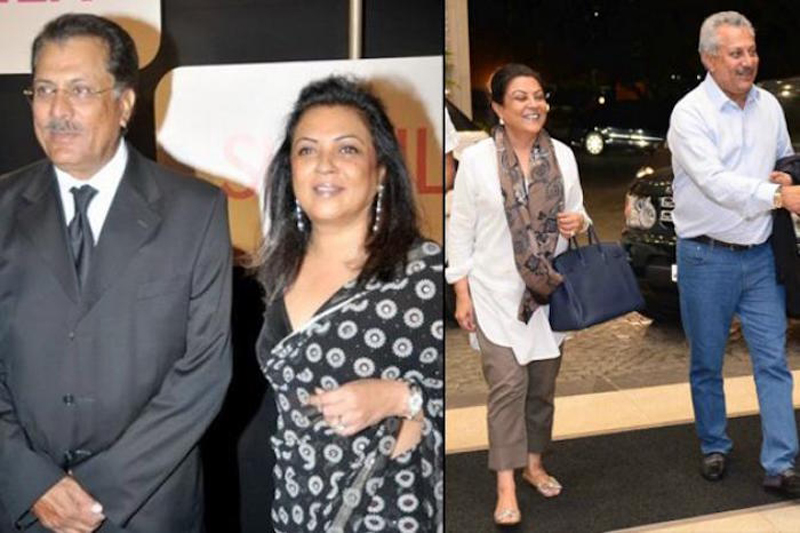 Famous Pakistani cricketer Zaheer Abbas married Kanpur girl Rita Luthra.[/caption]
Interestingly, Zaheer Abbas was born in Sialkot in Pakistani Punjab where Rita’s father’s family used to live before the Partition. Rita’s father was a friend of Mohsin’s father from their Sialkot days.
In 1947, Rita’s father moved to Kanpur’s Swarup Nagar. But it was destiny that brought the two families together in the 1980s through Rita and Zaheer Abbas.
3: Sania Mirza and Shoaib Malik: This one of Indian Pakistani marriages involved two sporting stars. In 2010, India’s most famous female player Sania Mirza created sensation when she decided to tie the knot with Pakistani cricketer Shoaib Malik. What a drama of a marriage it turned out to be!
Sania broke off her engagement to her childhood sweetheart Sohrab Mirza to marry Shoaib.
[caption id="attachment_858" align="alignnone" width="800"]
Famous Pakistani cricketer Zaheer Abbas married Kanpur girl Rita Luthra.[/caption]
Interestingly, Zaheer Abbas was born in Sialkot in Pakistani Punjab where Rita’s father’s family used to live before the Partition. Rita’s father was a friend of Mohsin’s father from their Sialkot days.
In 1947, Rita’s father moved to Kanpur’s Swarup Nagar. But it was destiny that brought the two families together in the 1980s through Rita and Zaheer Abbas.
3: Sania Mirza and Shoaib Malik: This one of Indian Pakistani marriages involved two sporting stars. In 2010, India’s most famous female player Sania Mirza created sensation when she decided to tie the knot with Pakistani cricketer Shoaib Malik. What a drama of a marriage it turned out to be!
Sania broke off her engagement to her childhood sweetheart Sohrab Mirza to marry Shoaib.
[caption id="attachment_858" align="alignnone" width="800"]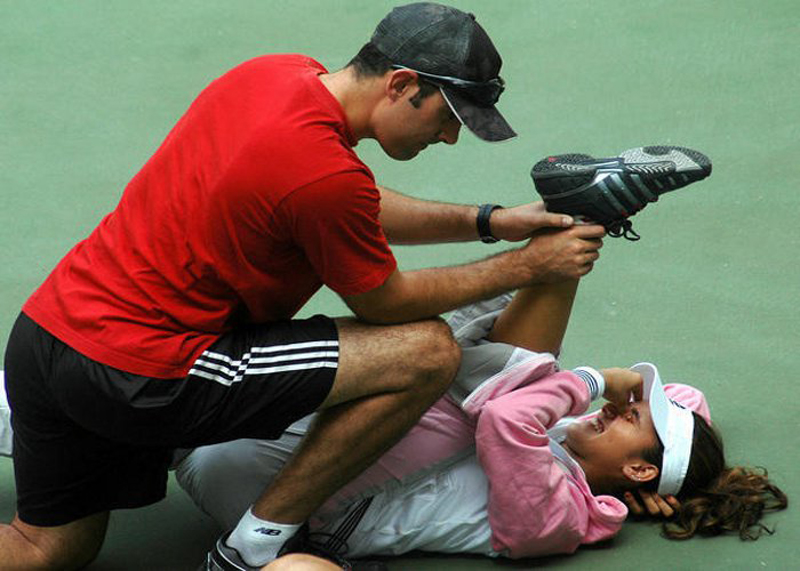 Sania Mirza and husband Shoaib Malik[/caption]
And just before their wedding it came out that Shoaib Malik too was already married to another Hyderabadi girl Ayesha Siddiqui.
Though Malik initially denied it, when Ayesha’s family produced the marriage certificate he conceded that he was previously married to Ayesha but had divorced her.
After the marriage, Sania didn’t move to Pakistan as she preferred to play for India.
Today, Sania and Shoaib are happily married for four years.
4: Tavleen Singh and Salman Taseer: Indian journalist and author Tavleen Singh met Pakistani politician Salman Taseer (later Punjab governor who was assassinated by his own bodyguard) in London in the late 1970s when she was working there.
Salman was already married man with children, but the rich aristocrat from Lahore showed no hesitation in seducing the good-looking Sardarni from Delhi.
[caption id="attachment_859" align="alignnone" width="800"]
Sania Mirza and husband Shoaib Malik[/caption]
And just before their wedding it came out that Shoaib Malik too was already married to another Hyderabadi girl Ayesha Siddiqui.
Though Malik initially denied it, when Ayesha’s family produced the marriage certificate he conceded that he was previously married to Ayesha but had divorced her.
After the marriage, Sania didn’t move to Pakistan as she preferred to play for India.
Today, Sania and Shoaib are happily married for four years.
4: Tavleen Singh and Salman Taseer: Indian journalist and author Tavleen Singh met Pakistani politician Salman Taseer (later Punjab governor who was assassinated by his own bodyguard) in London in the late 1970s when she was working there.
Salman was already married man with children, but the rich aristocrat from Lahore showed no hesitation in seducing the good-looking Sardarni from Delhi.
[caption id="attachment_859" align="alignnone" width="800"]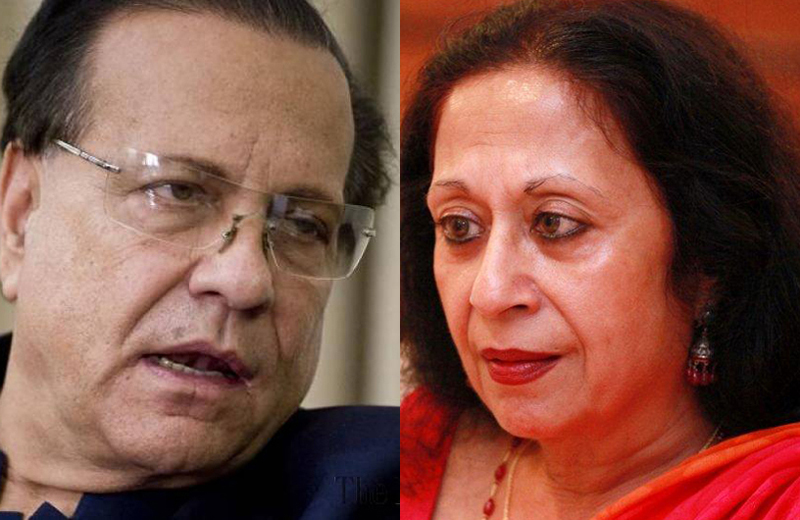 Salman Taseer (left) and Tavleen Singh (right)[/caption]
As the late Khushwant Singh wrote of the Tavleen-Salman affair, ``They hit it off and spent the whole week together. Tavleen became pregnant. She wrote to him in Lahore and toyed with the idea of aborting her pregnancy. He dissuaded her from doing so. He rented a flat for her in London. He joined her for a while. But his ardour had abated. He had more affairs, including one with an Indian film star... Tavleen sensed the romance was over and returned to Delhi much embittered by her experience.’’
Their brief union was their son Aatish Taseer.
5: Nonita Lall and Faisal Qureshi: India’s top female golfer Nonita Lall met Pakistani golfing champion Faisal Qureshi in early 1992 during a golf tournament in Islamabad. A rip-roaring romance developed between them during the tournament.
A month later, Qureshi went on his knees and proposed to Nonita. She said `yes’ and and the two married immediately.
[caption id="attachment_860" align="alignnone" width="800"]
Salman Taseer (left) and Tavleen Singh (right)[/caption]
As the late Khushwant Singh wrote of the Tavleen-Salman affair, ``They hit it off and spent the whole week together. Tavleen became pregnant. She wrote to him in Lahore and toyed with the idea of aborting her pregnancy. He dissuaded her from doing so. He rented a flat for her in London. He joined her for a while. But his ardour had abated. He had more affairs, including one with an Indian film star... Tavleen sensed the romance was over and returned to Delhi much embittered by her experience.’’
Their brief union was their son Aatish Taseer.
5: Nonita Lall and Faisal Qureshi: India’s top female golfer Nonita Lall met Pakistani golfing champion Faisal Qureshi in early 1992 during a golf tournament in Islamabad. A rip-roaring romance developed between them during the tournament.
A month later, Qureshi went on his knees and proposed to Nonita. She said `yes’ and and the two married immediately.
[caption id="attachment_860" align="alignnone" width="800"]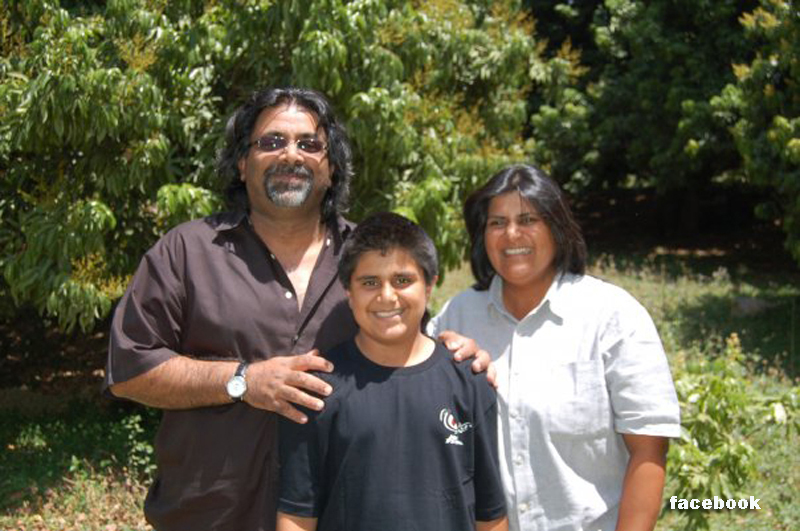 Nonita Lall with husband Faisal Qureshi and son.[/caption]
Like Sania Mirza, Nonia Lall also told her would-be husband that she would continue to live in Delhi and play for India
.
``It was very clear that I would continue to play for India while Faisal played for Pakistan. I played for India for years after my marriage, till 1999, to be precise,’’ Nonita said in a interview some time ago.
The couple, who currently live in New Delhi and had a son, briefly lived in Sri Lanka because of visa problems for her Pakistani husband.
Nonita Lall with husband Faisal Qureshi and son.[/caption]
Like Sania Mirza, Nonia Lall also told her would-be husband that she would continue to live in Delhi and play for India
.
``It was very clear that I would continue to play for India while Faisal played for Pakistan. I played for India for years after my marriage, till 1999, to be precise,’’ Nonita said in a interview some time ago.
The couple, who currently live in New Delhi and had a son, briefly lived in Sri Lanka because of visa problems for her Pakistani husband. 







